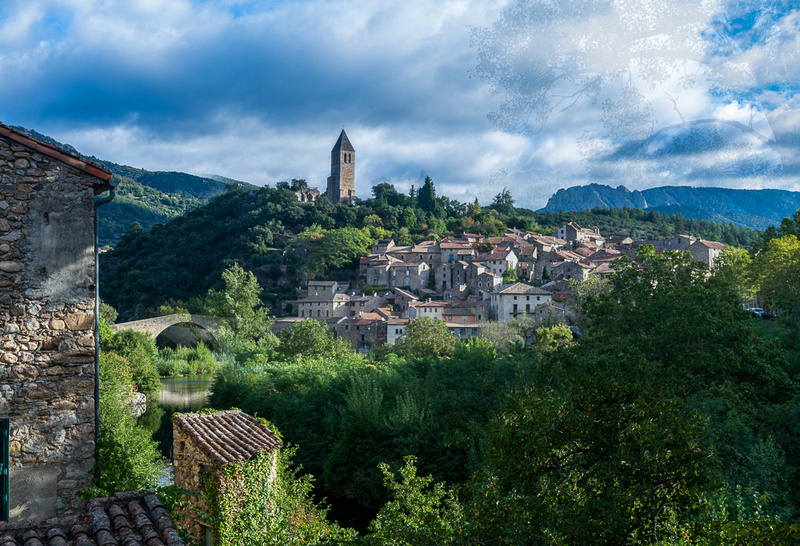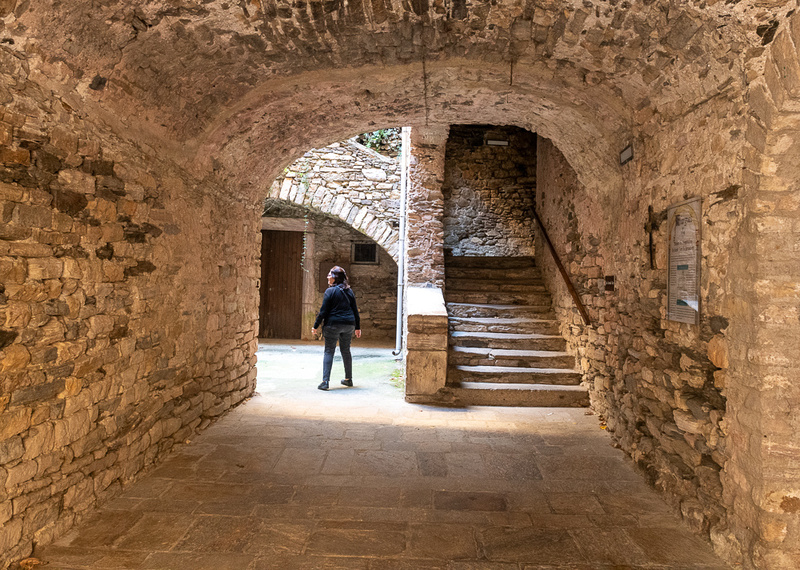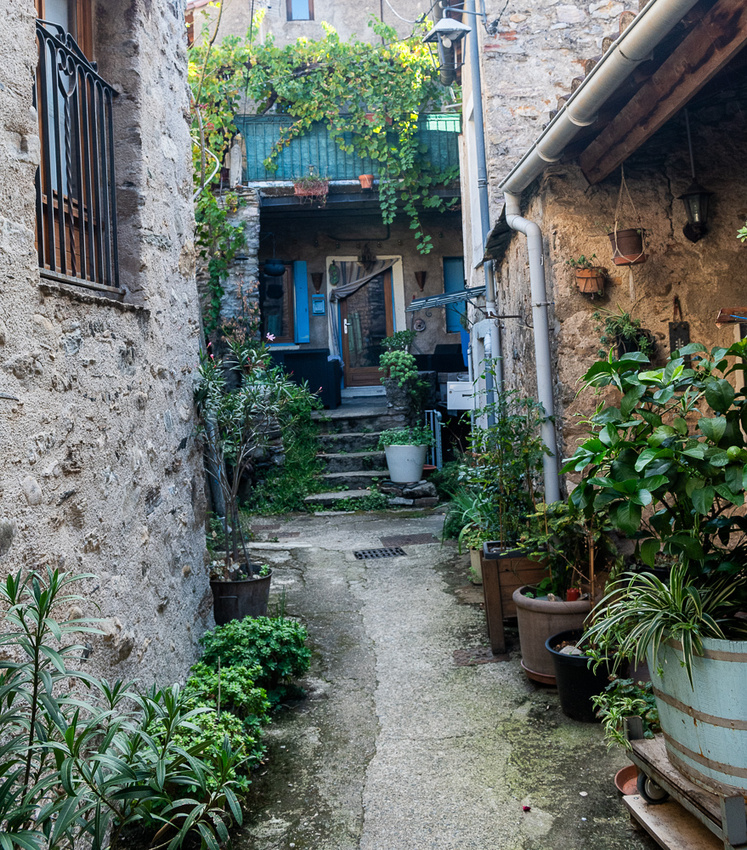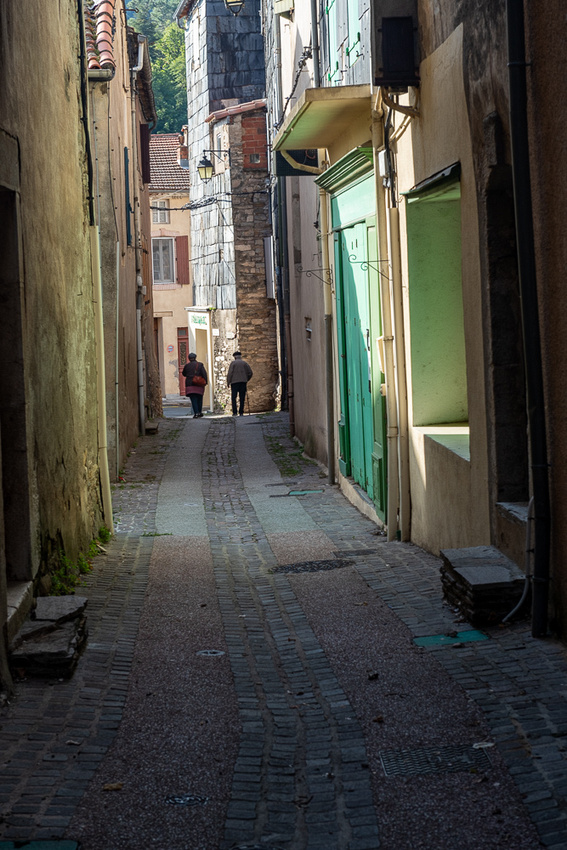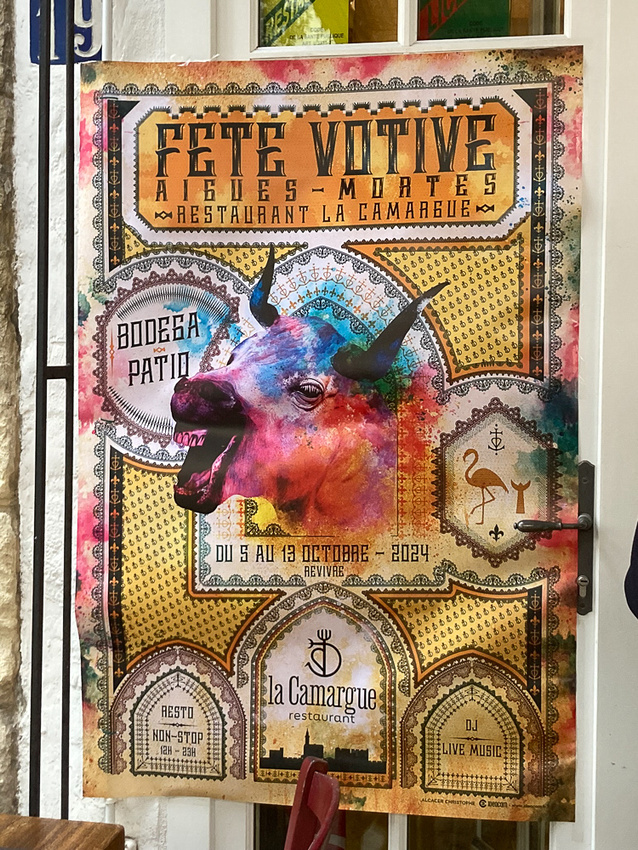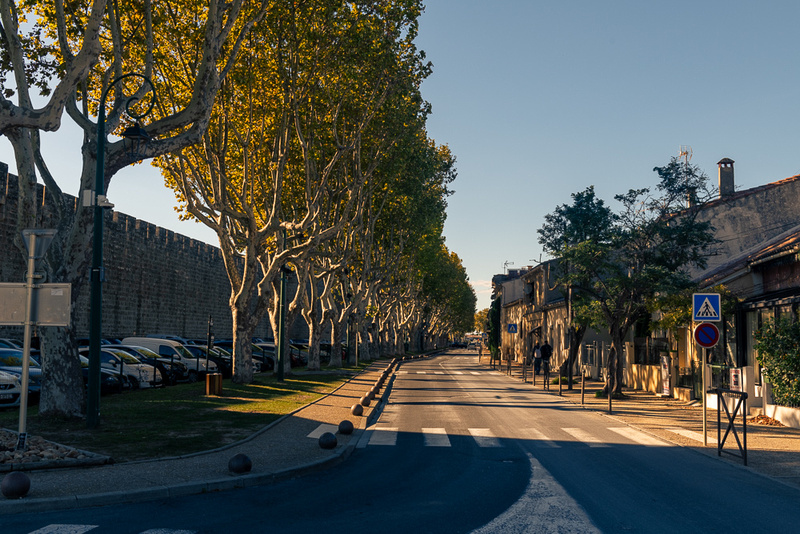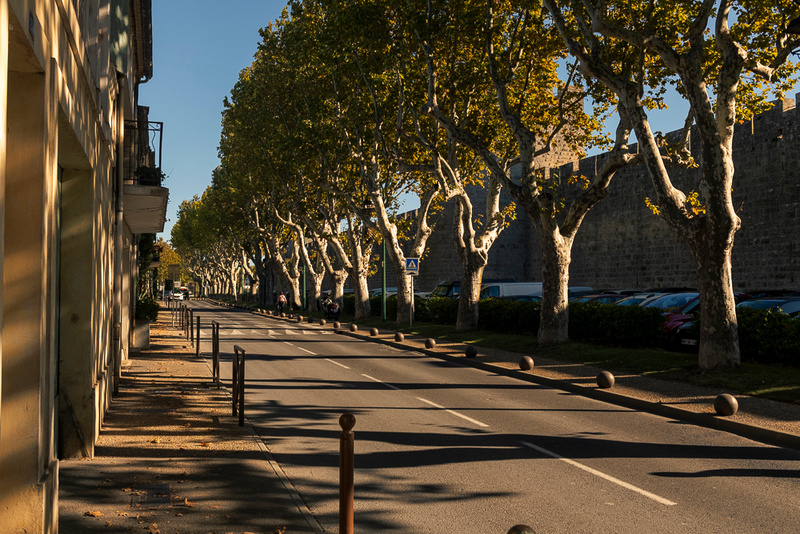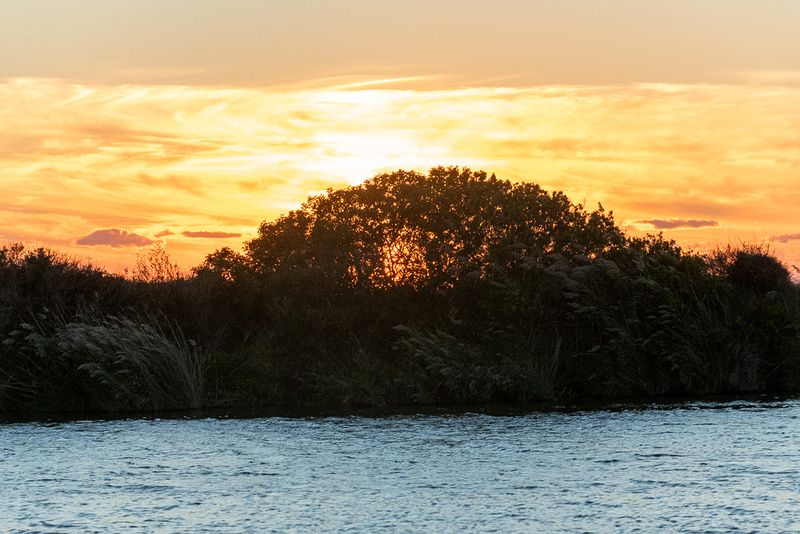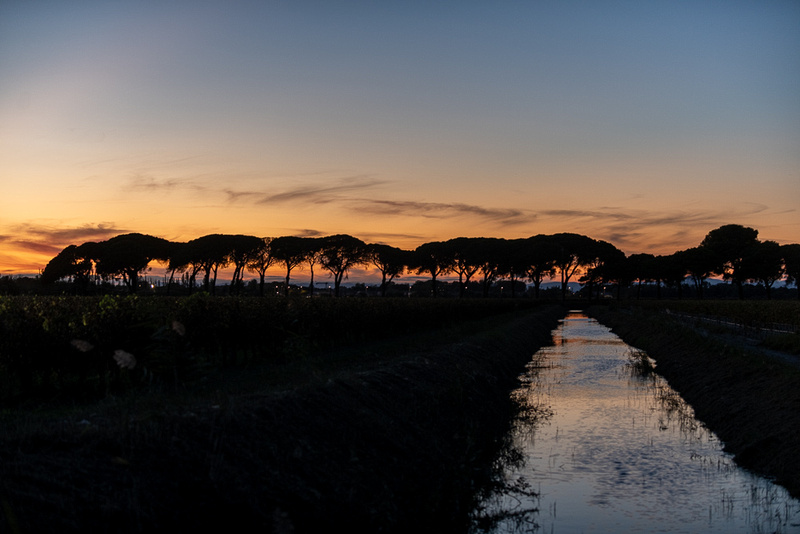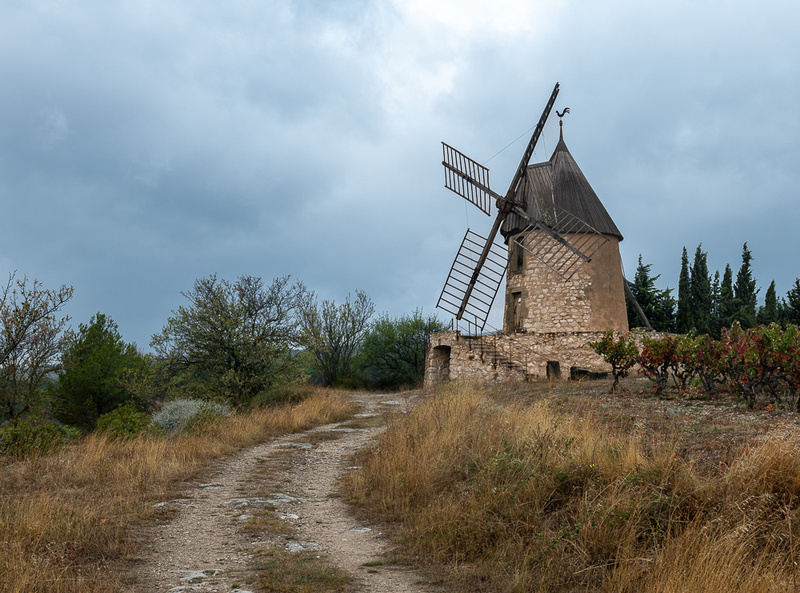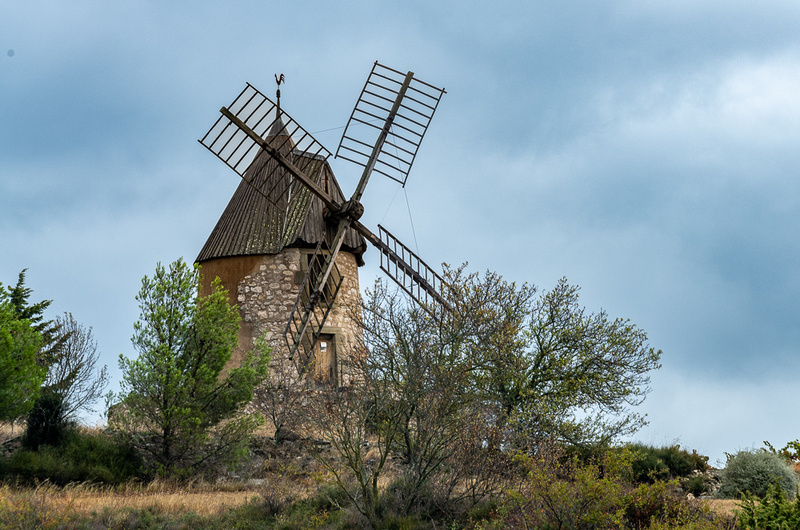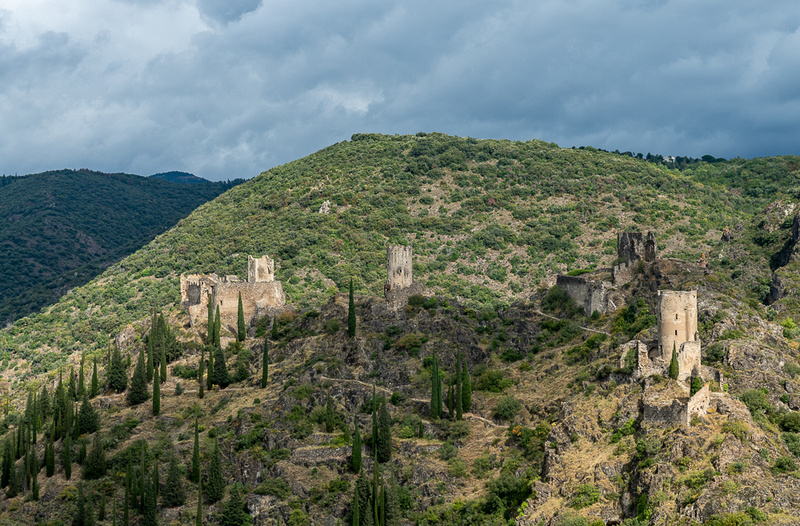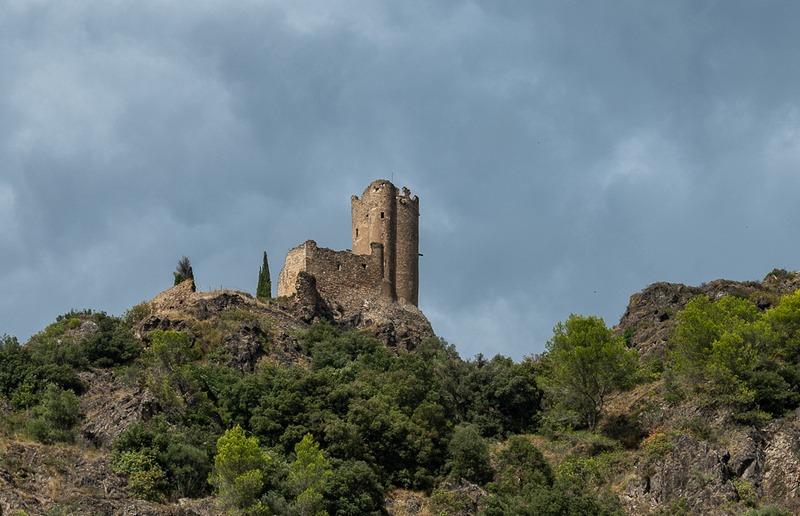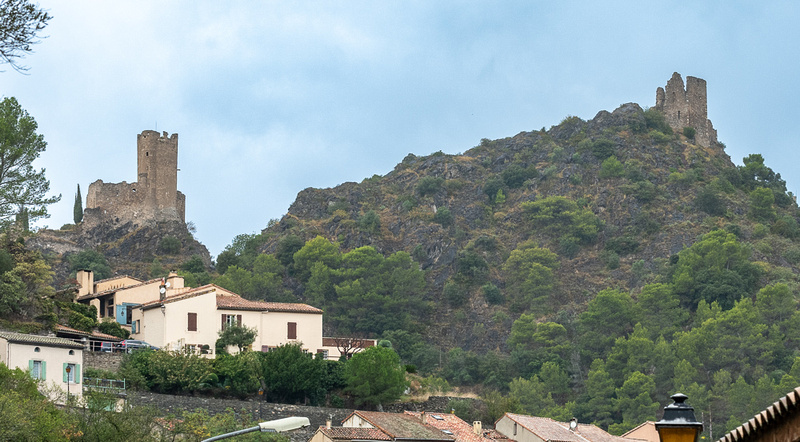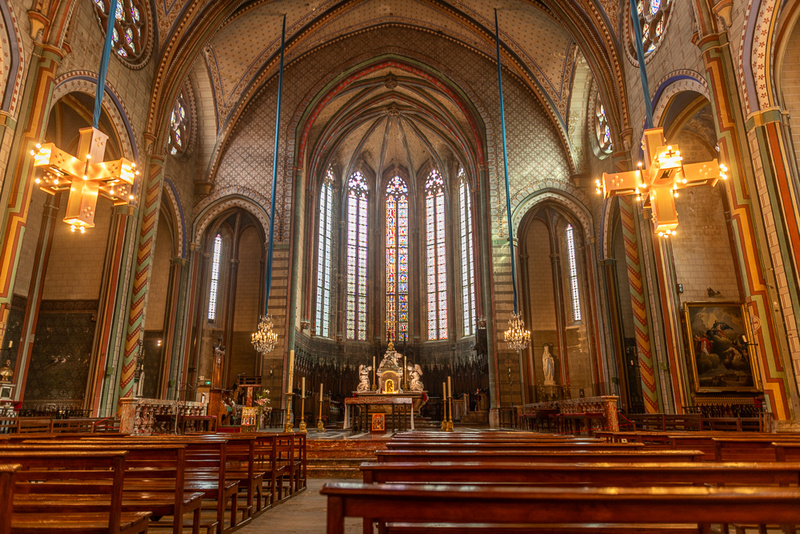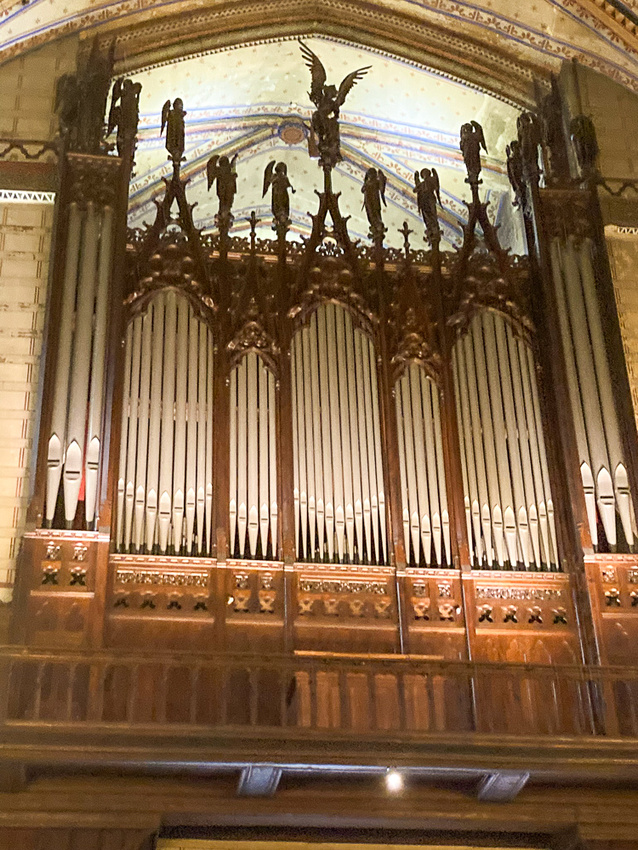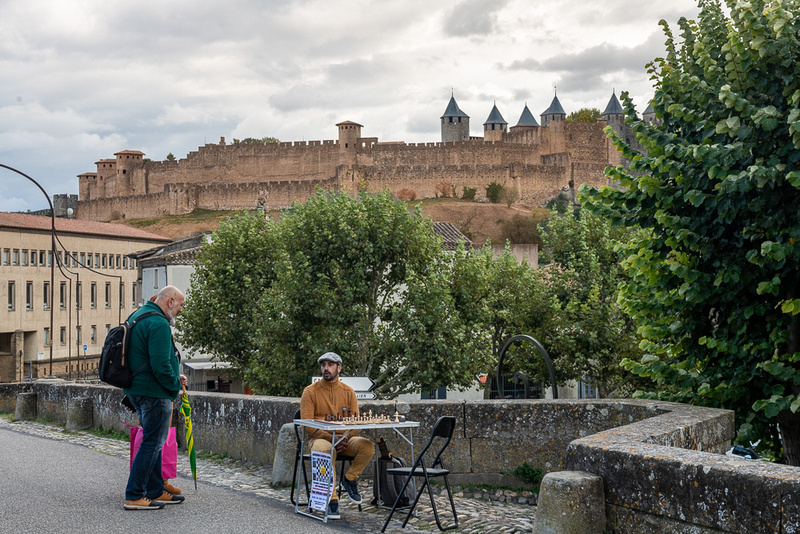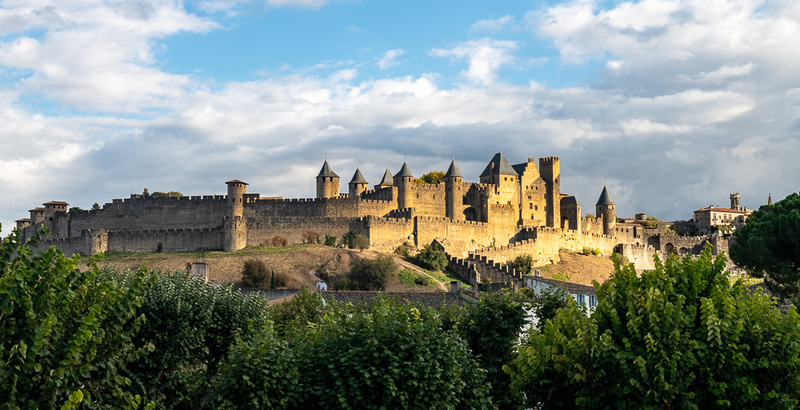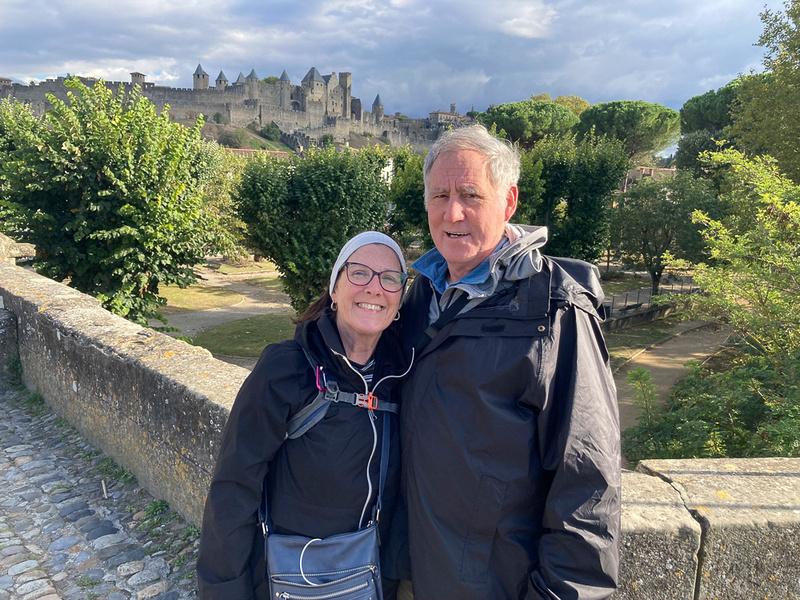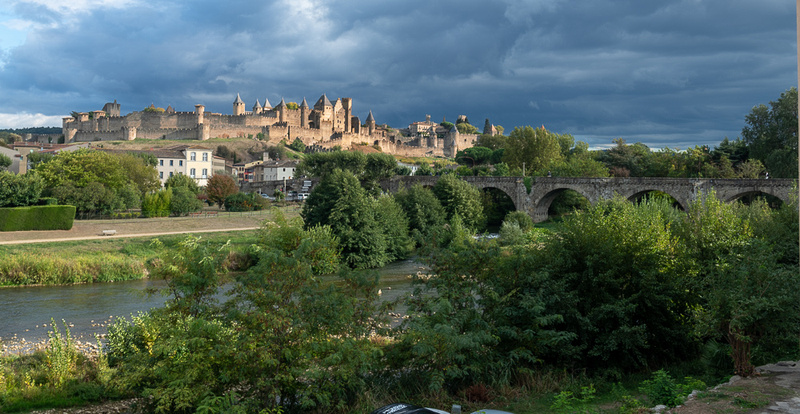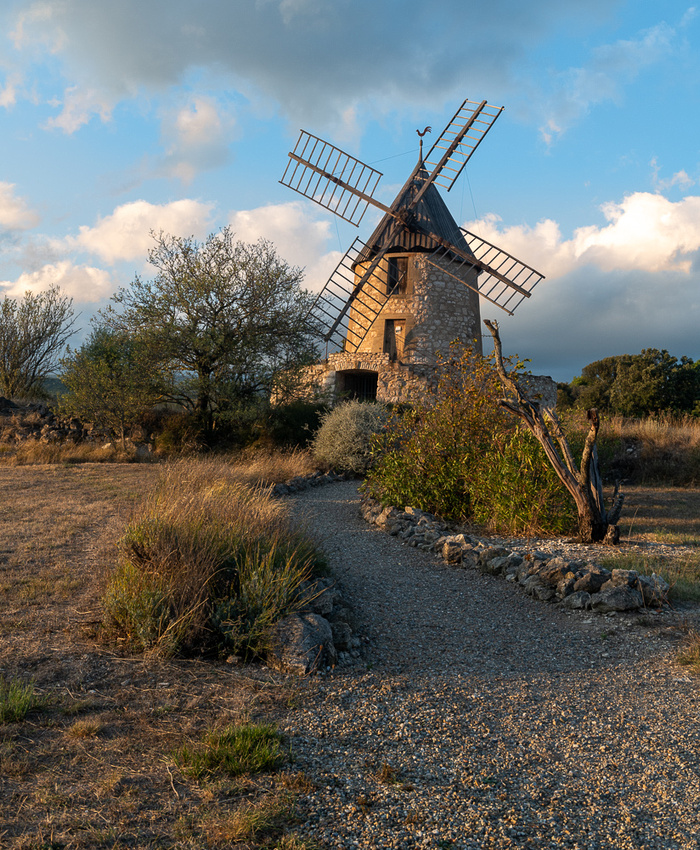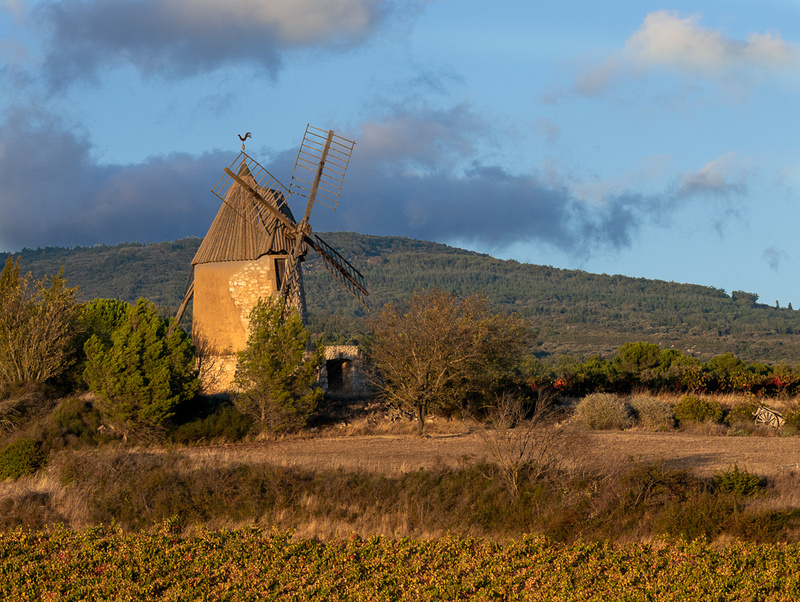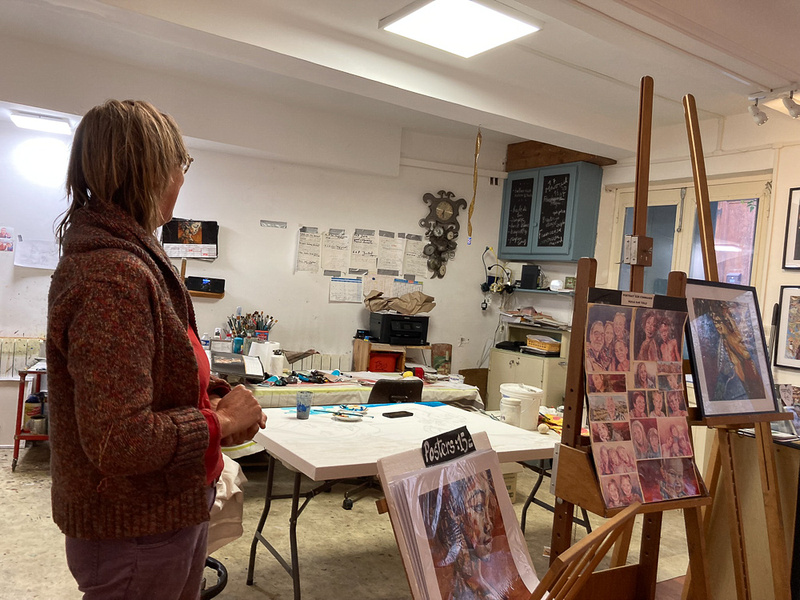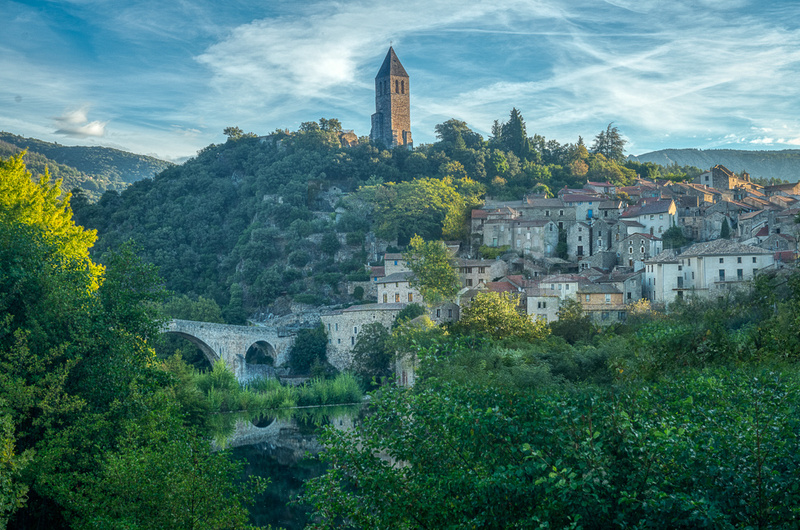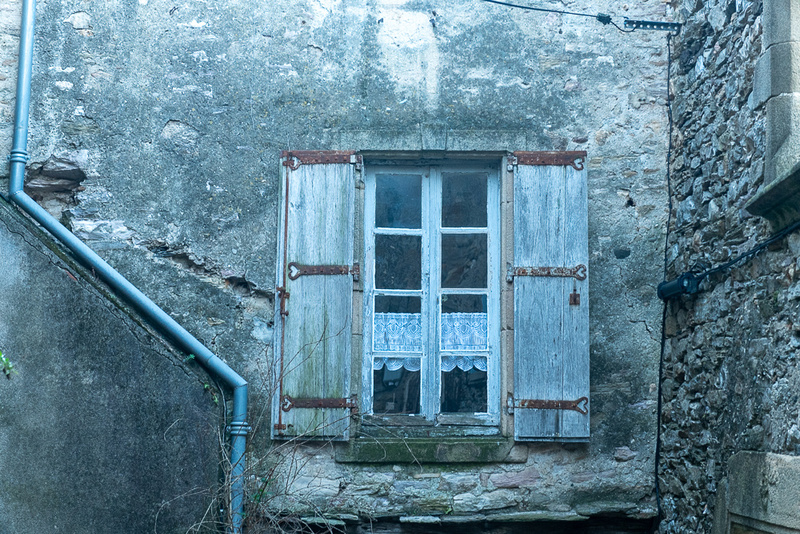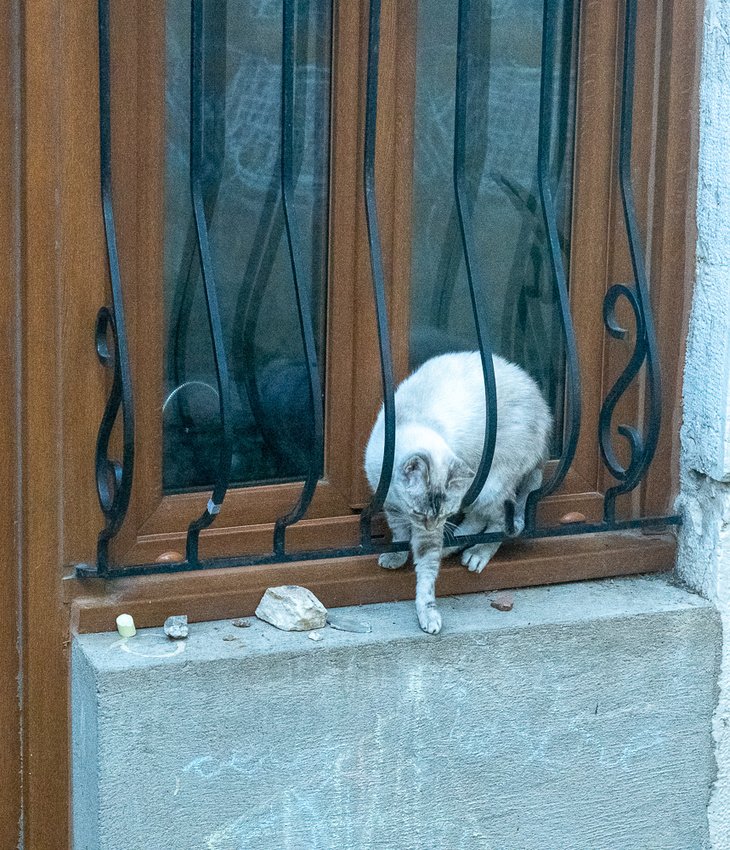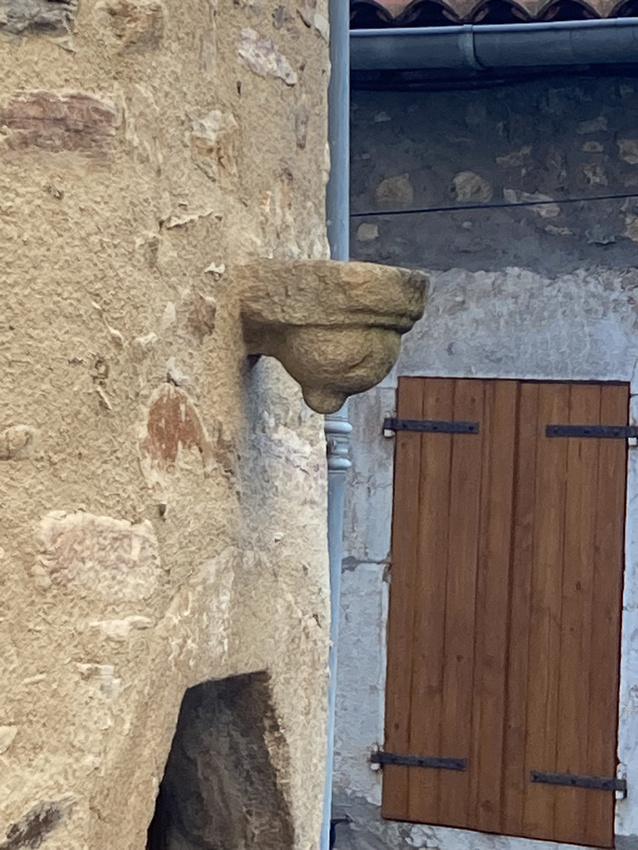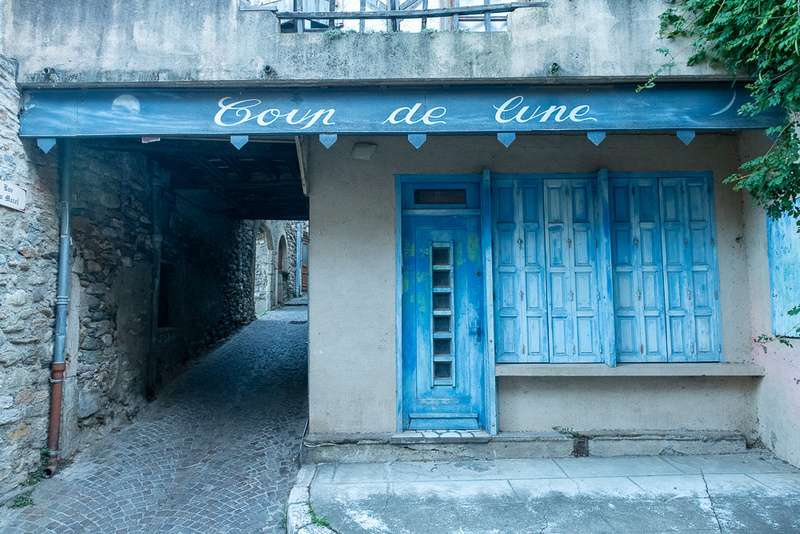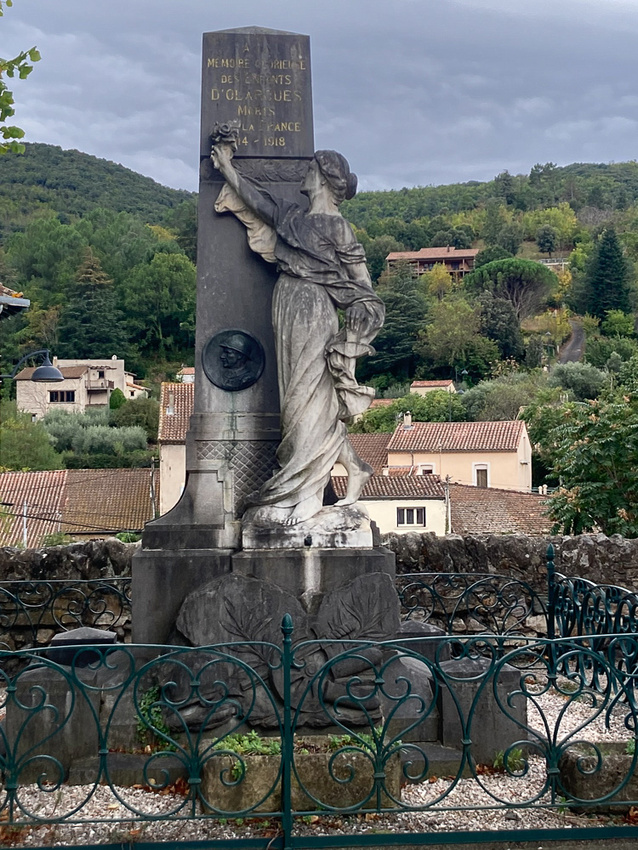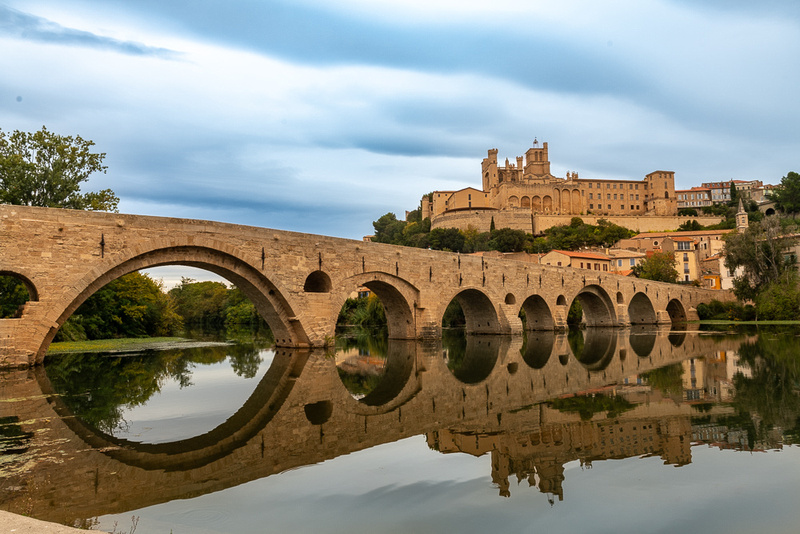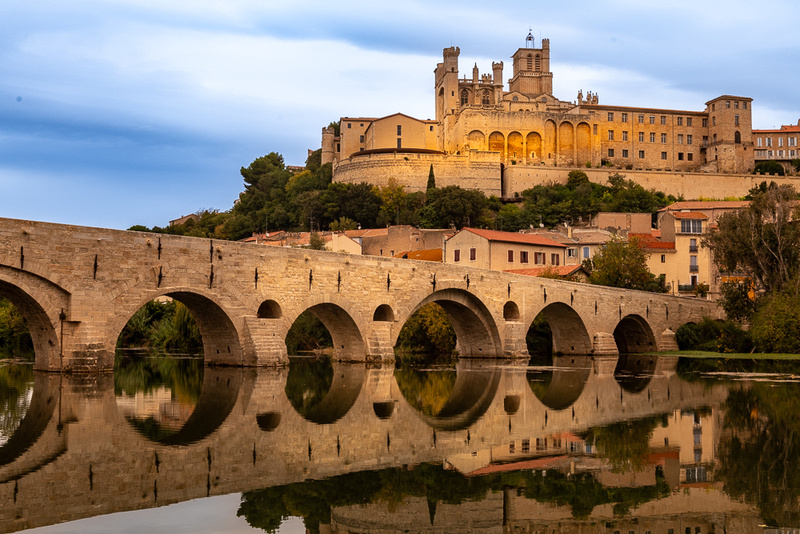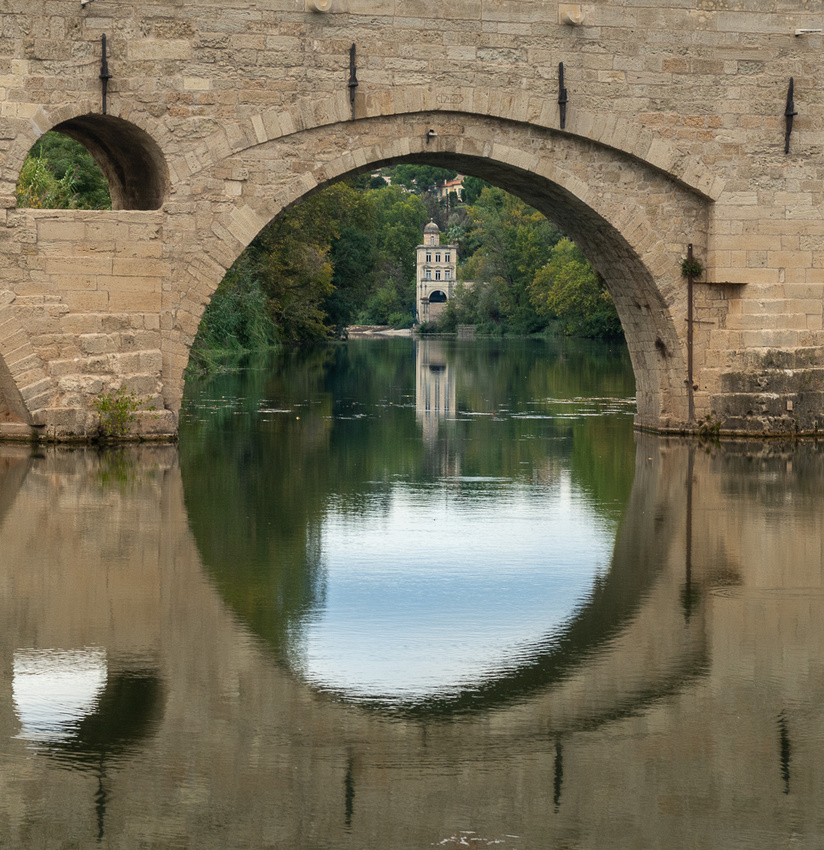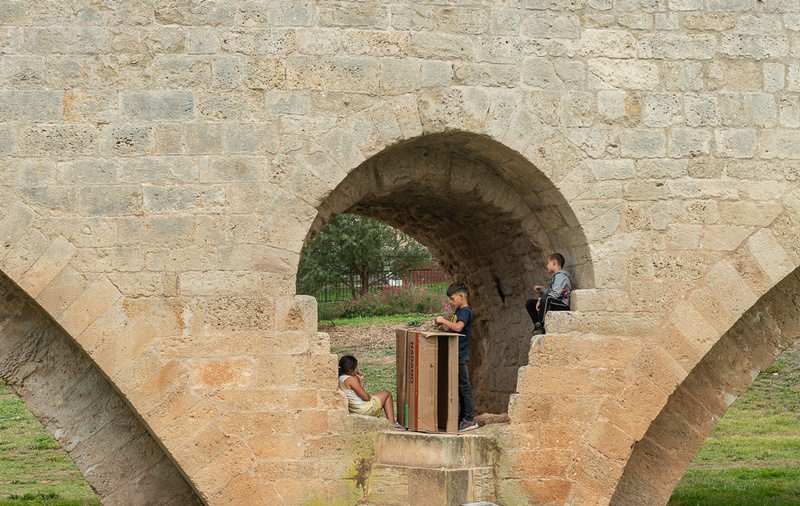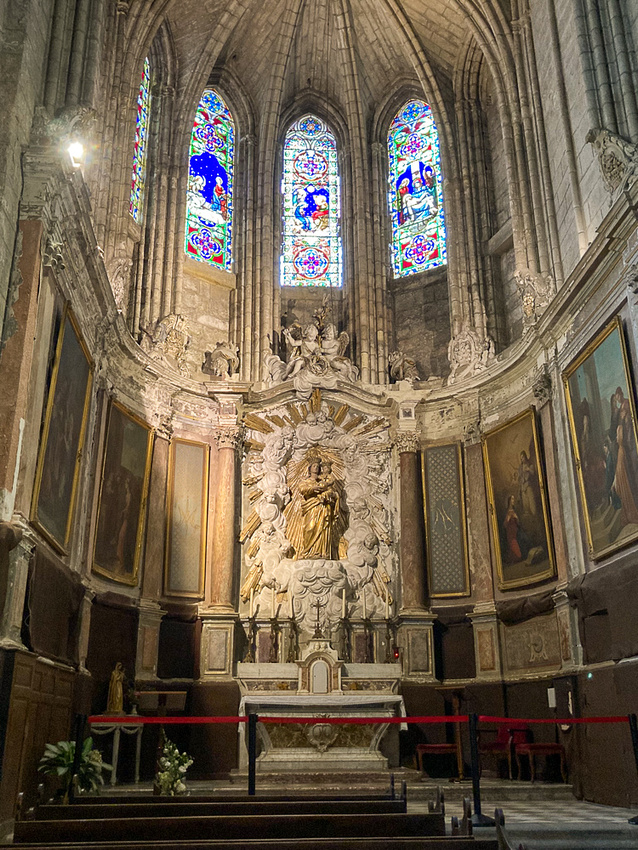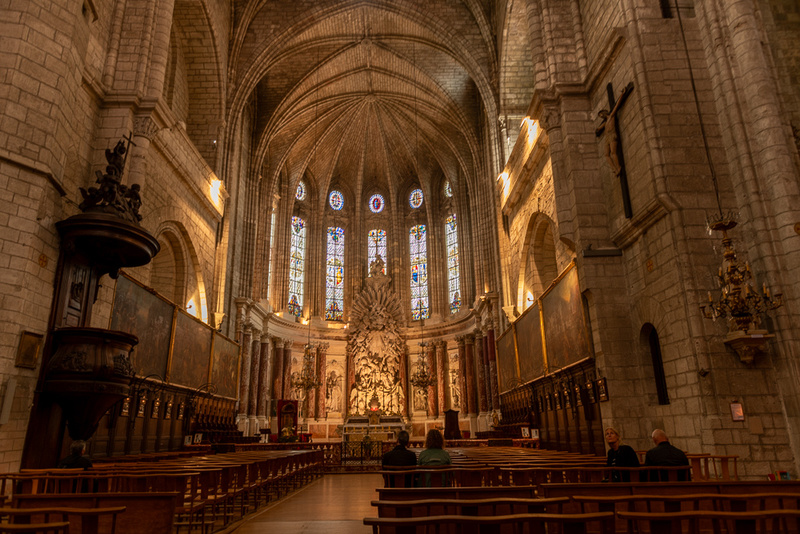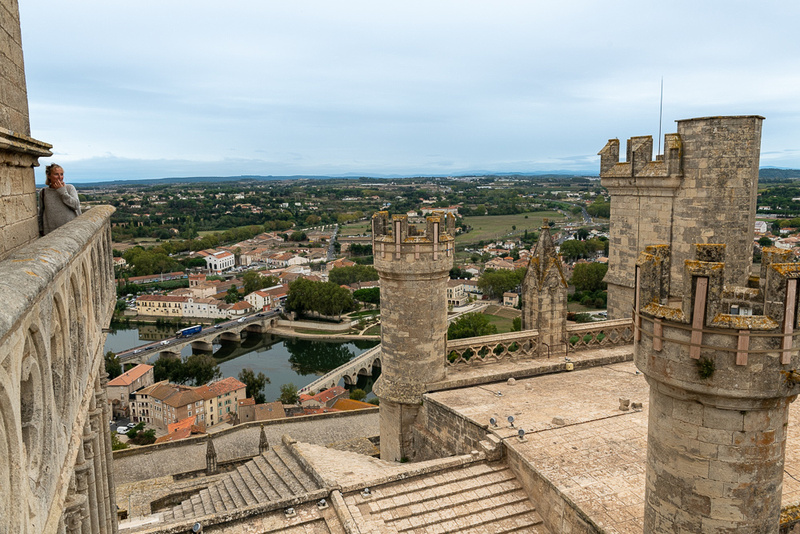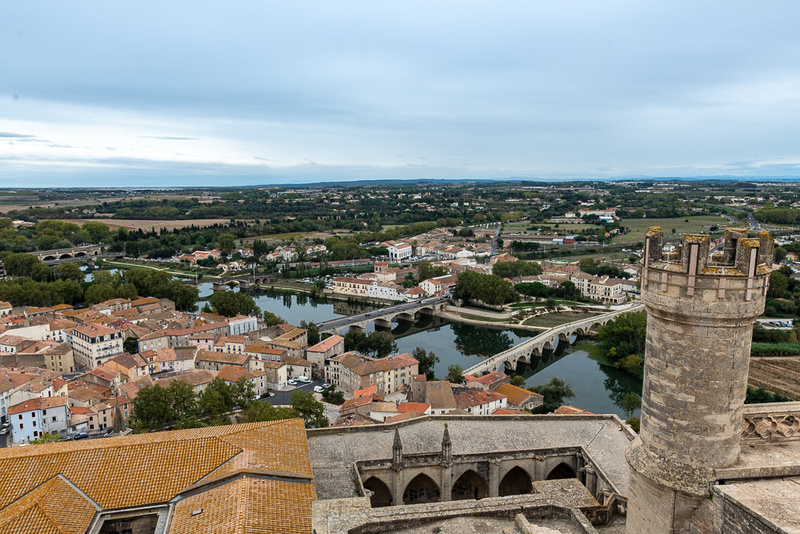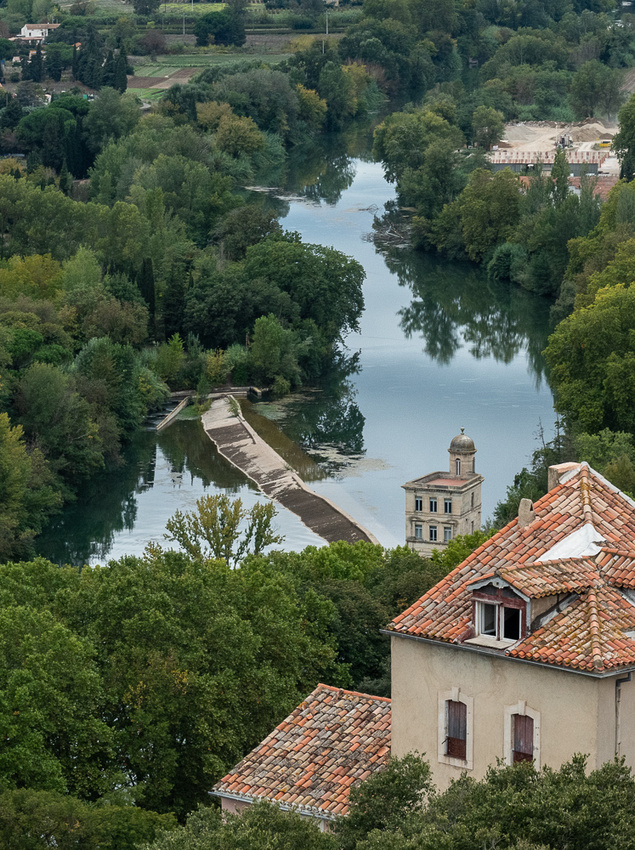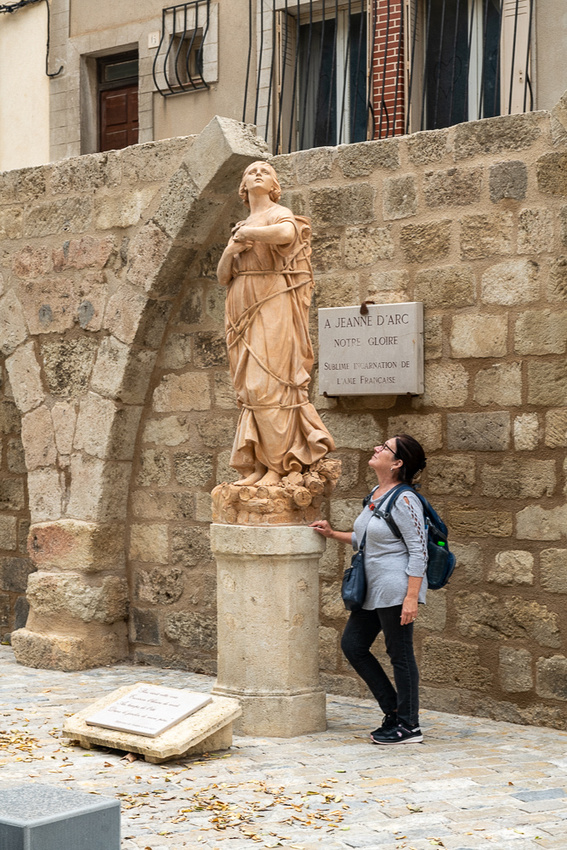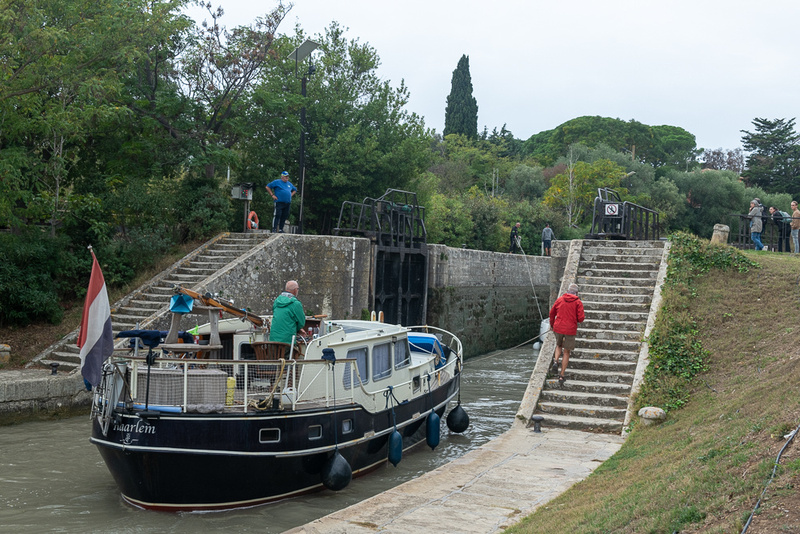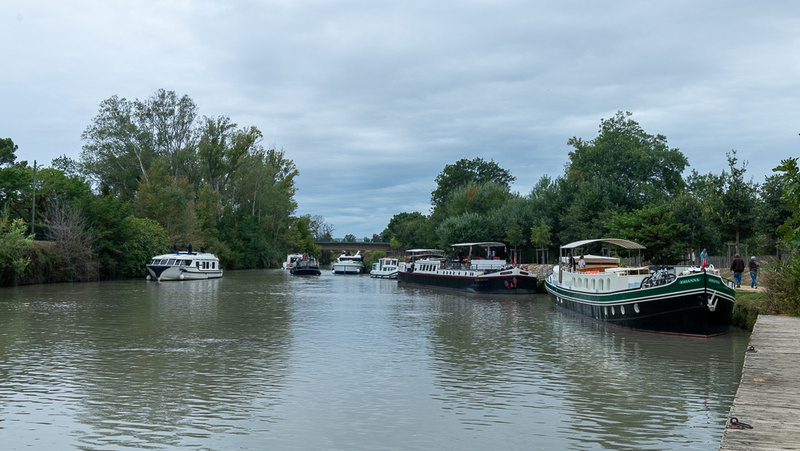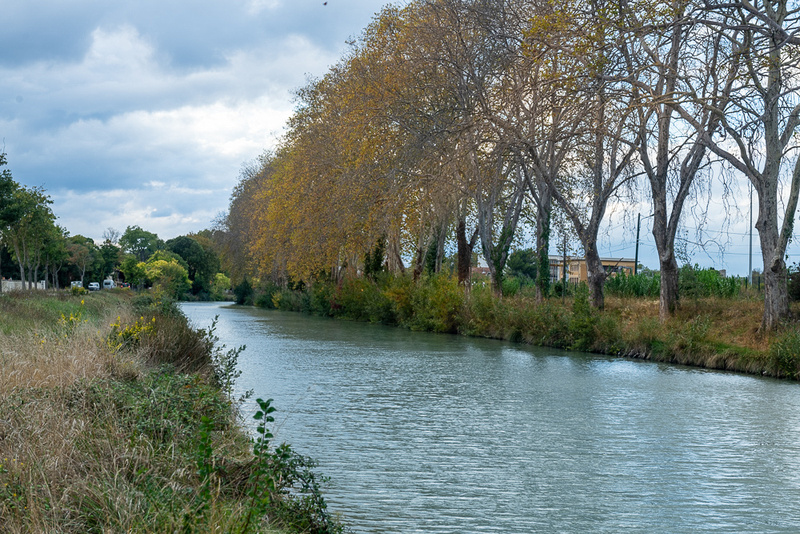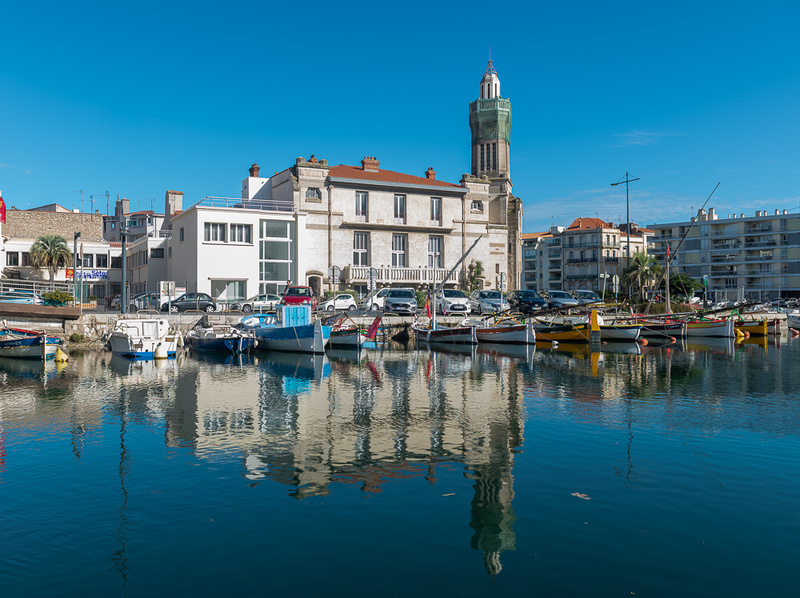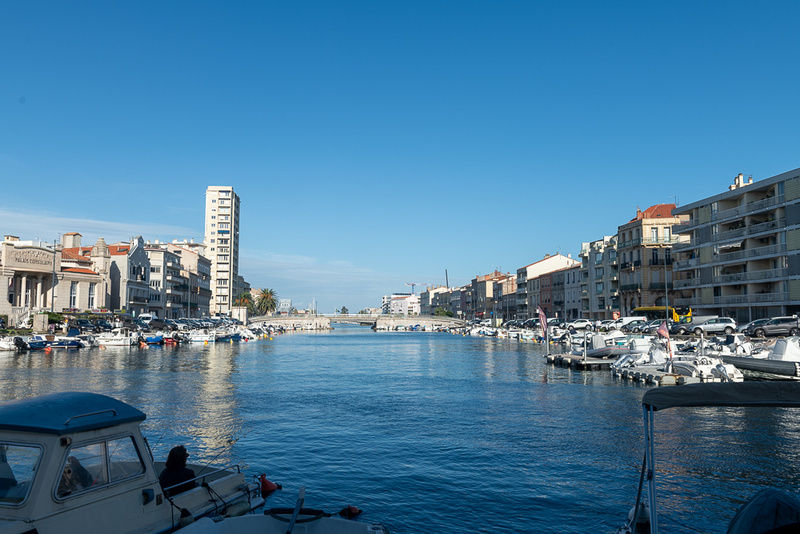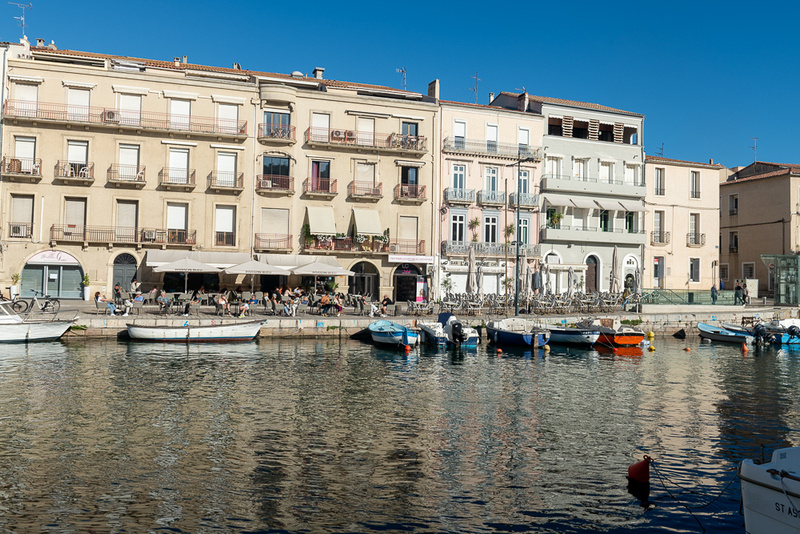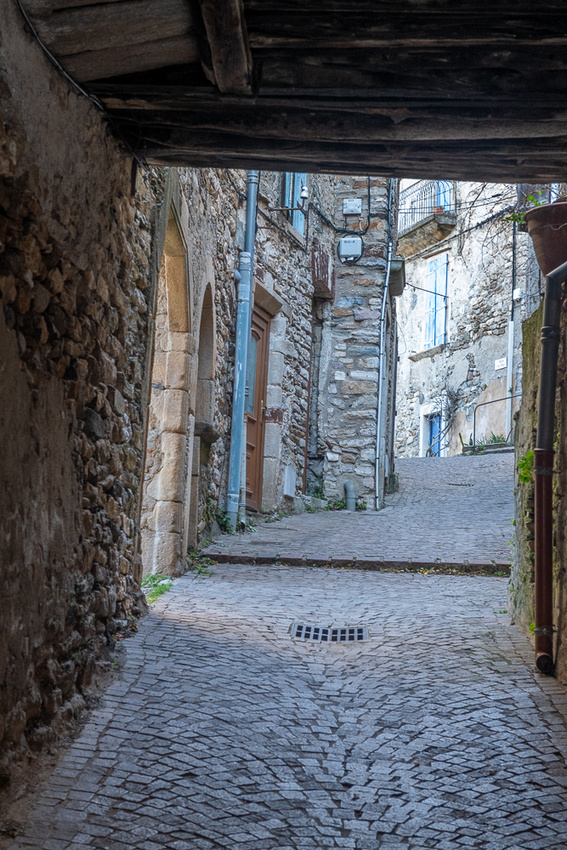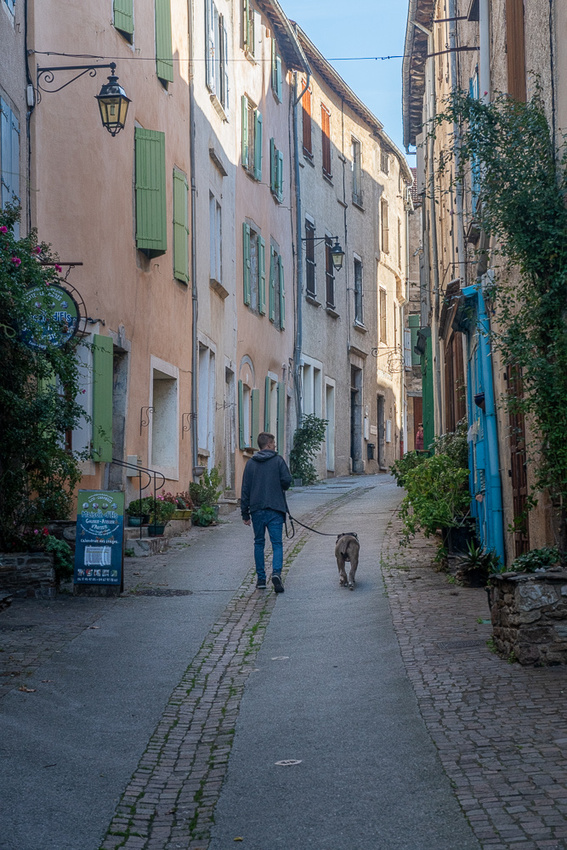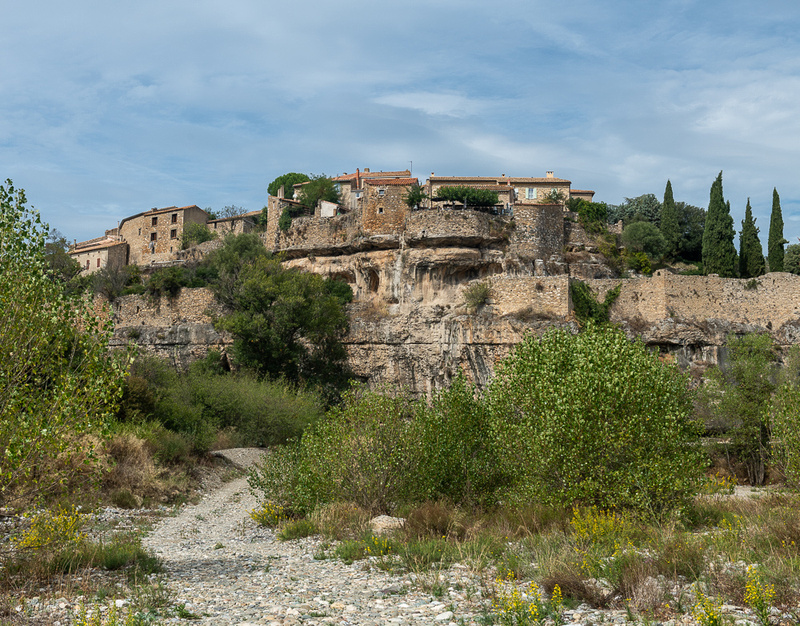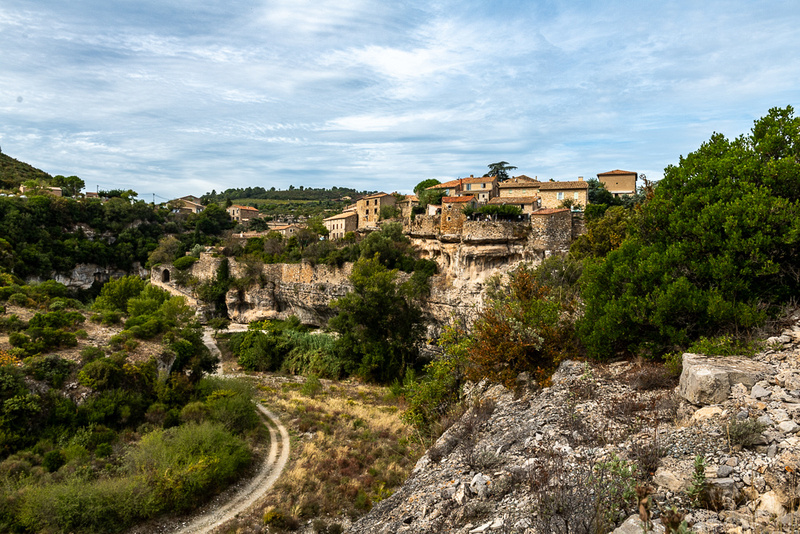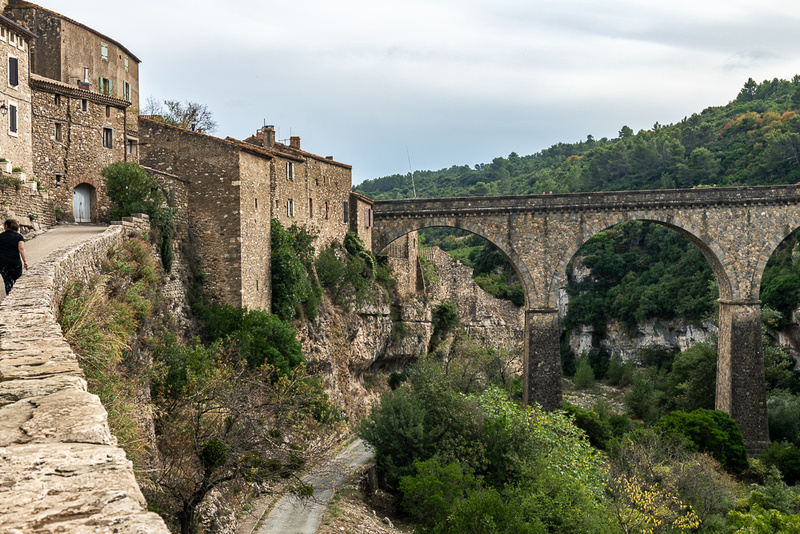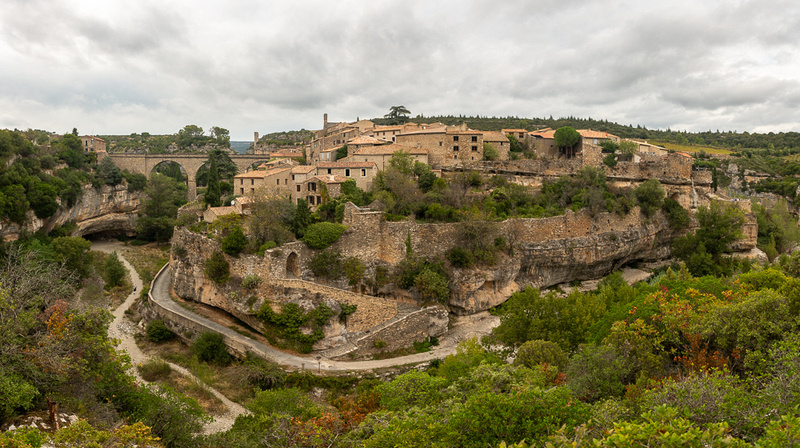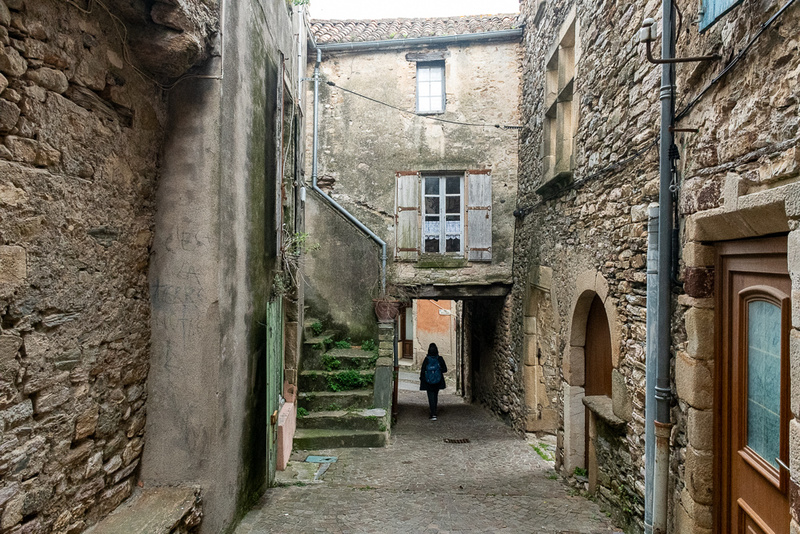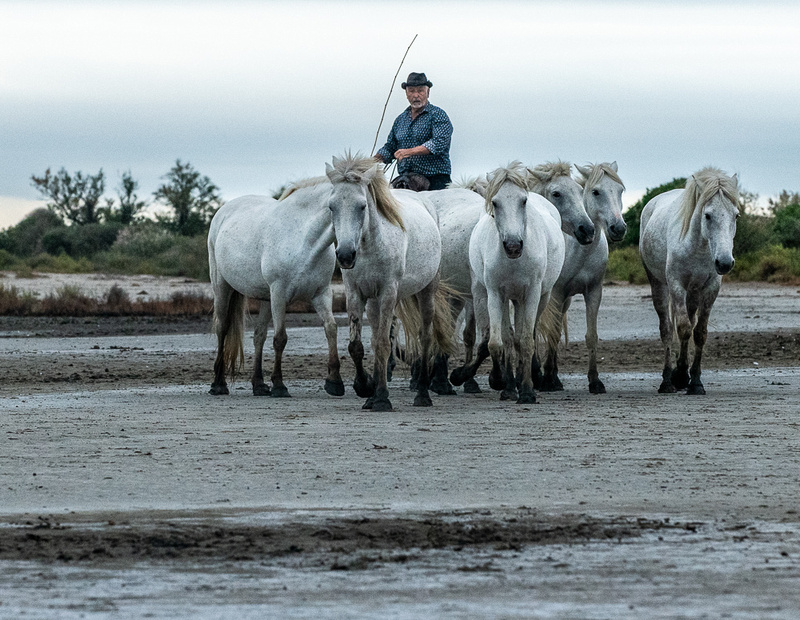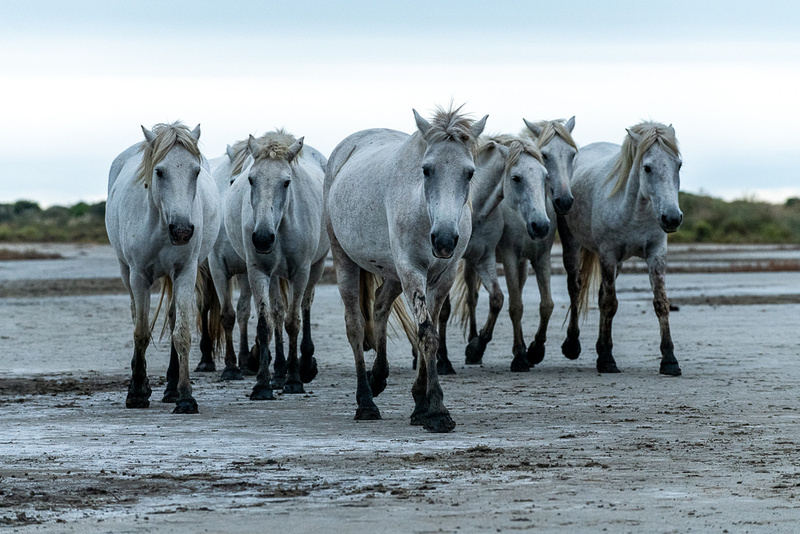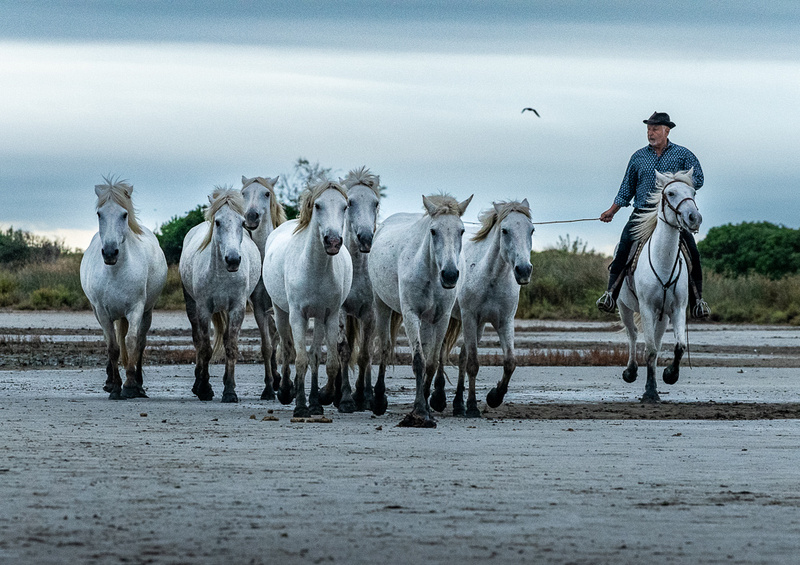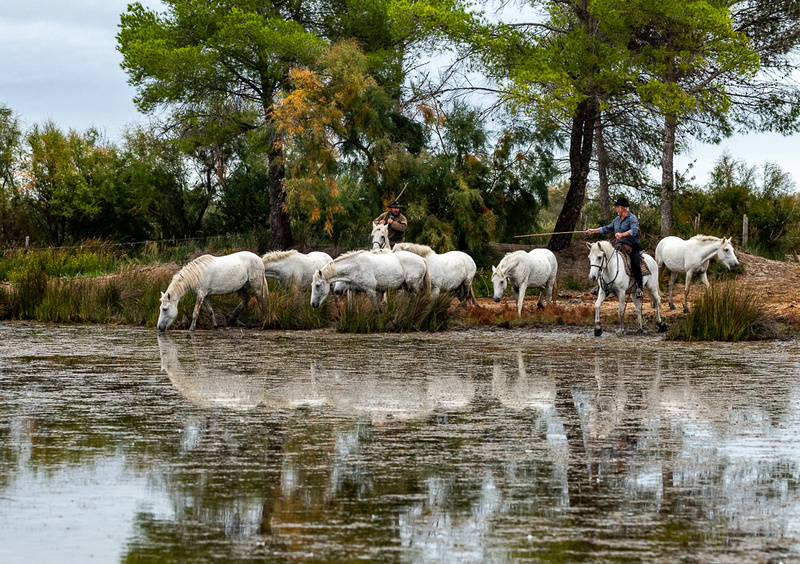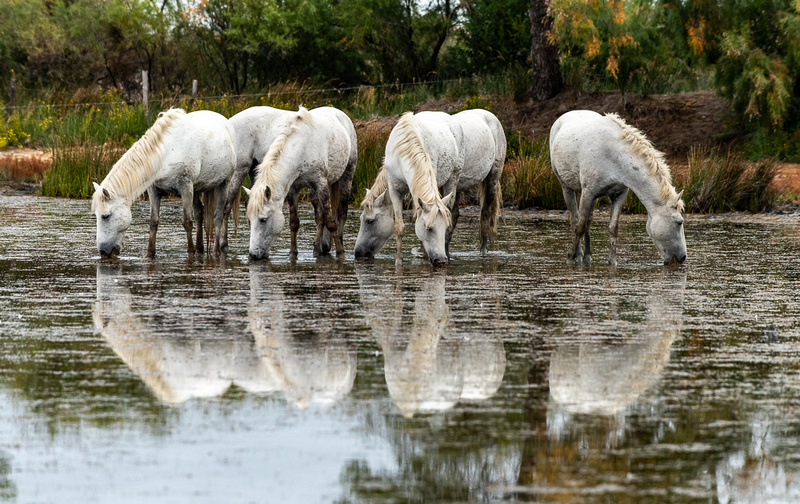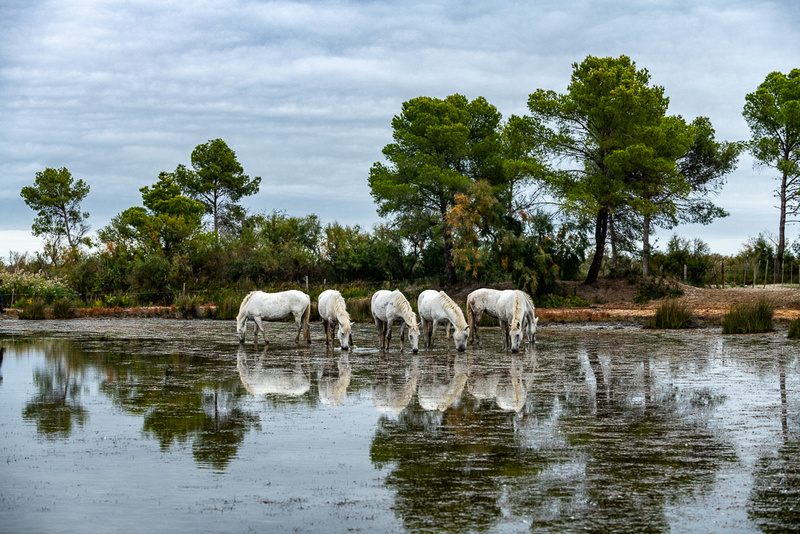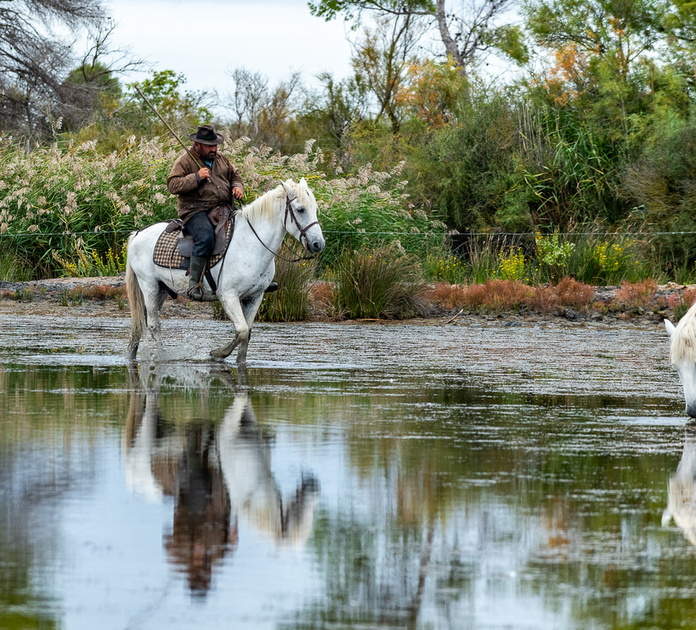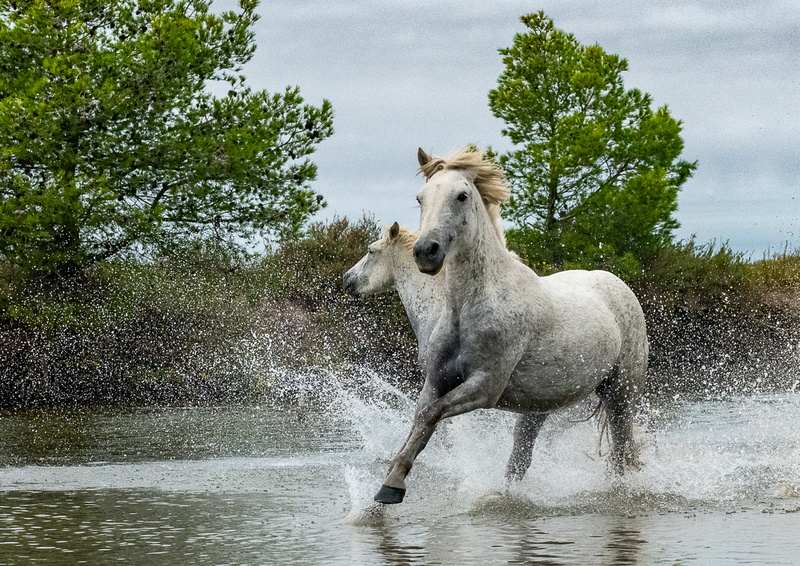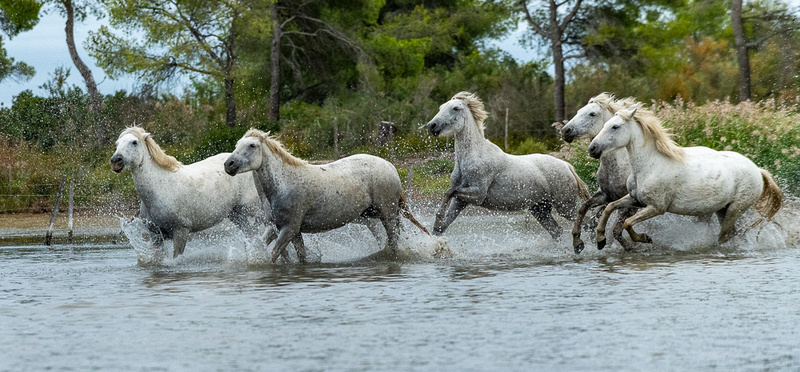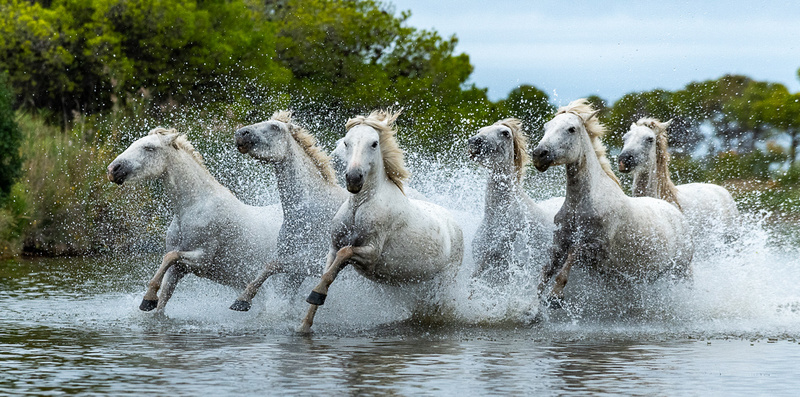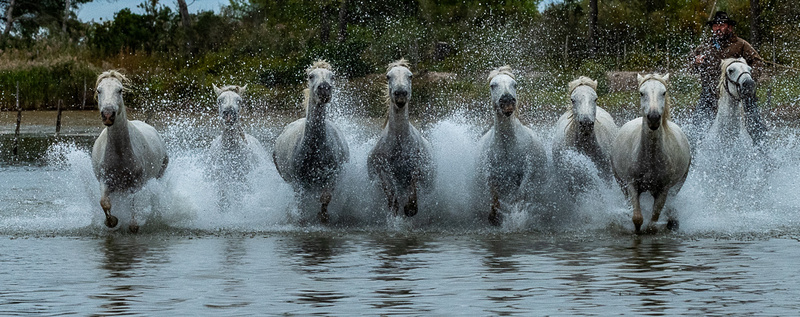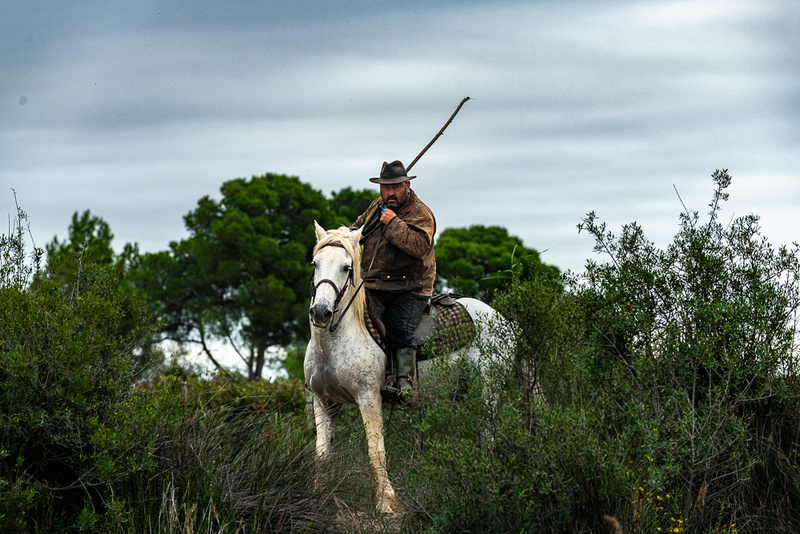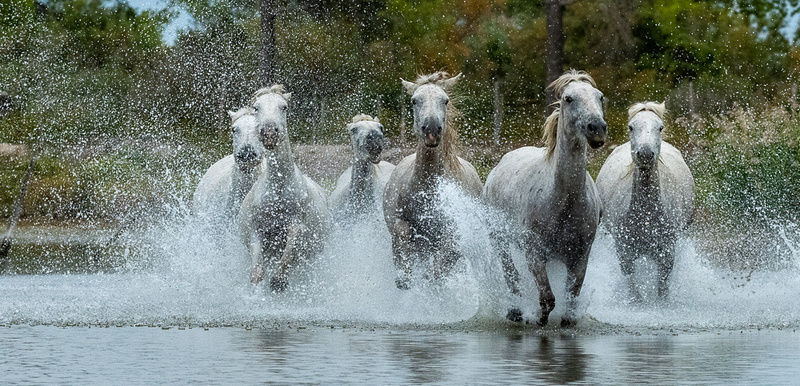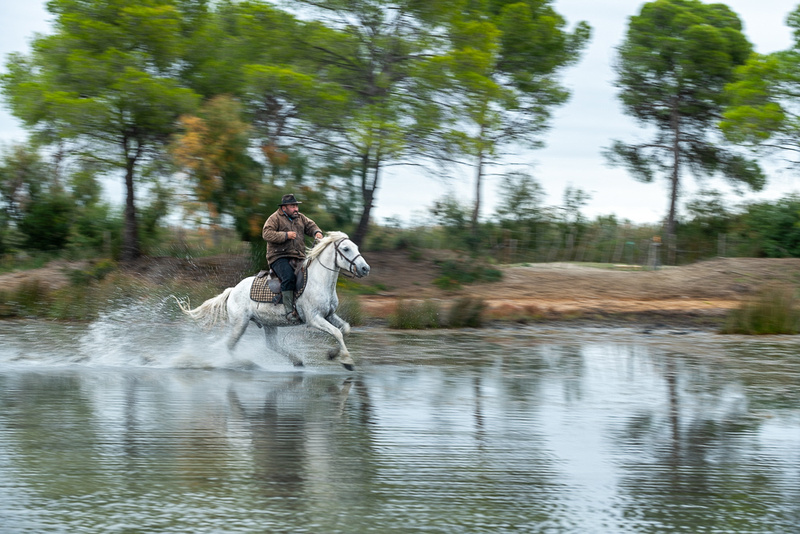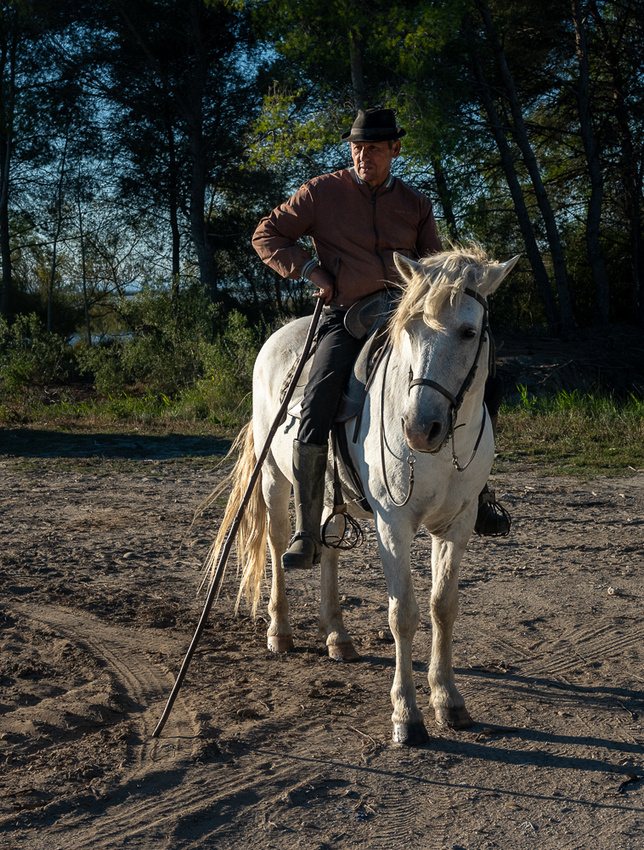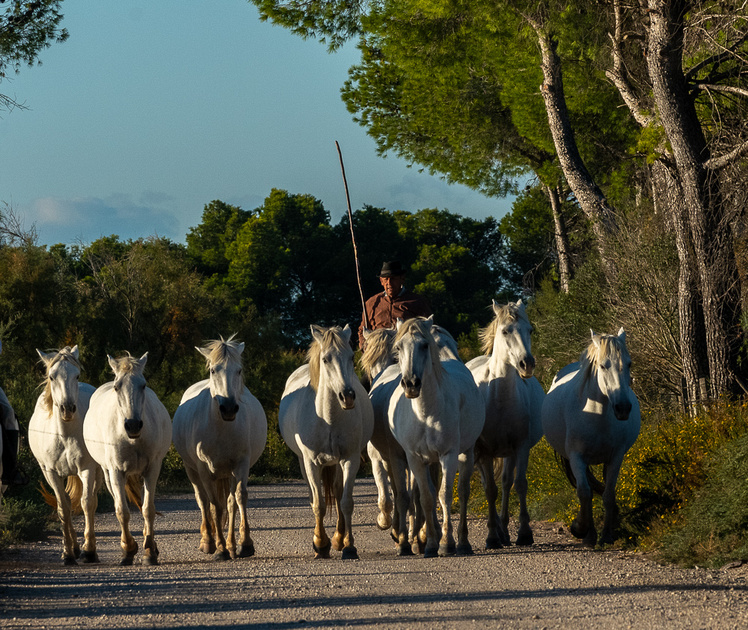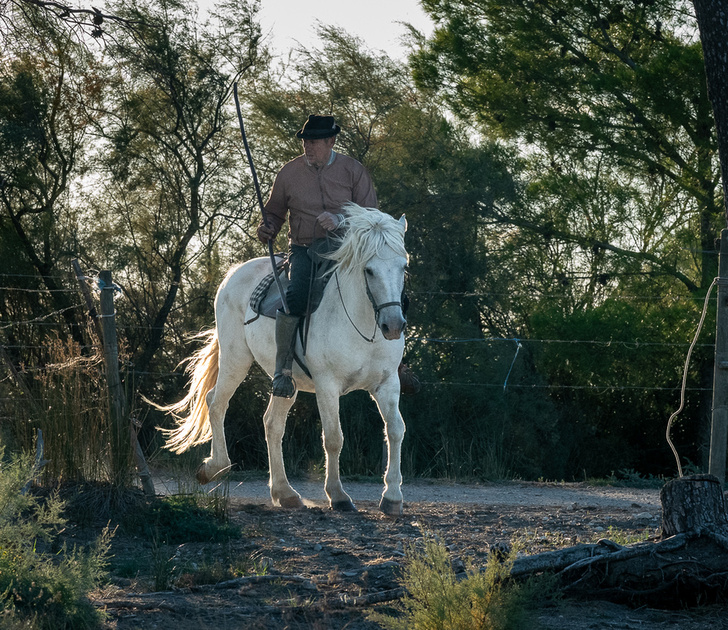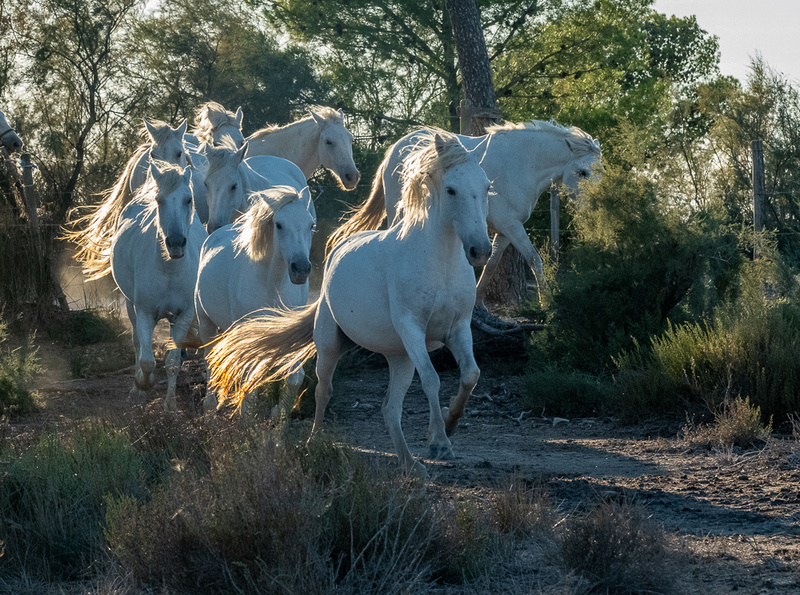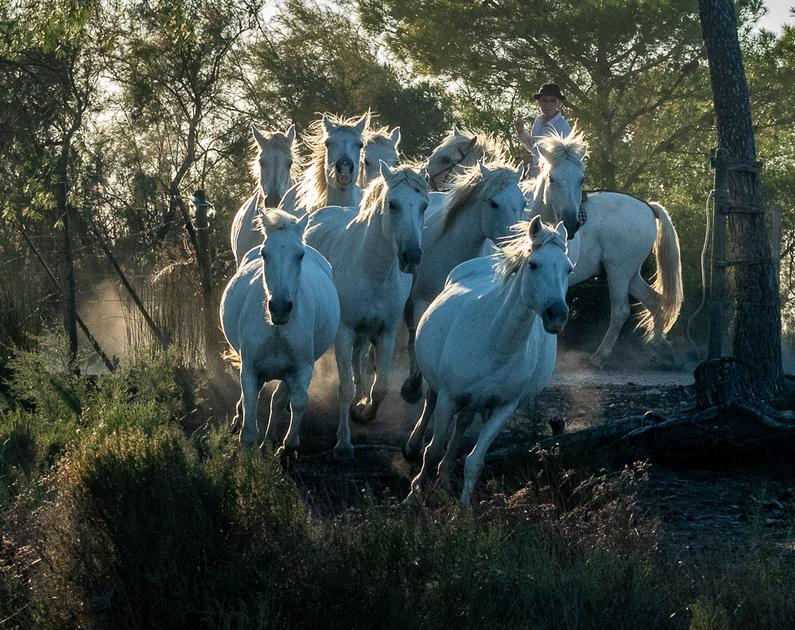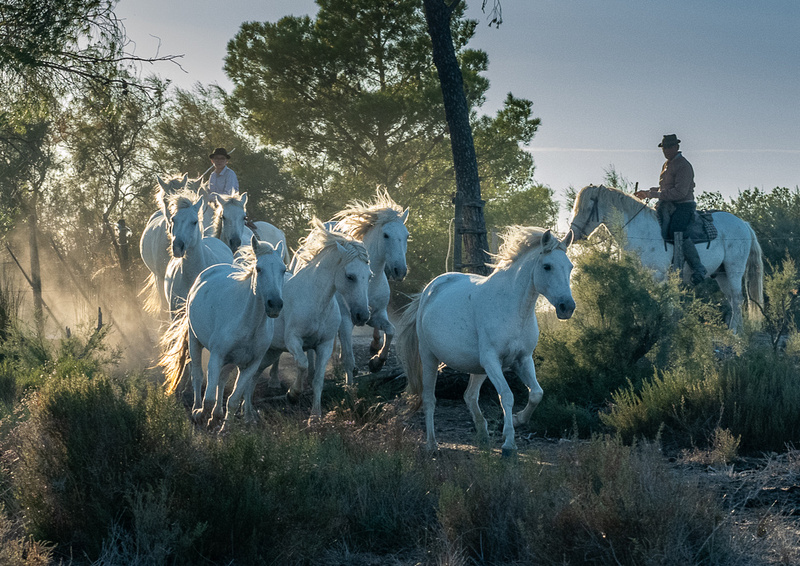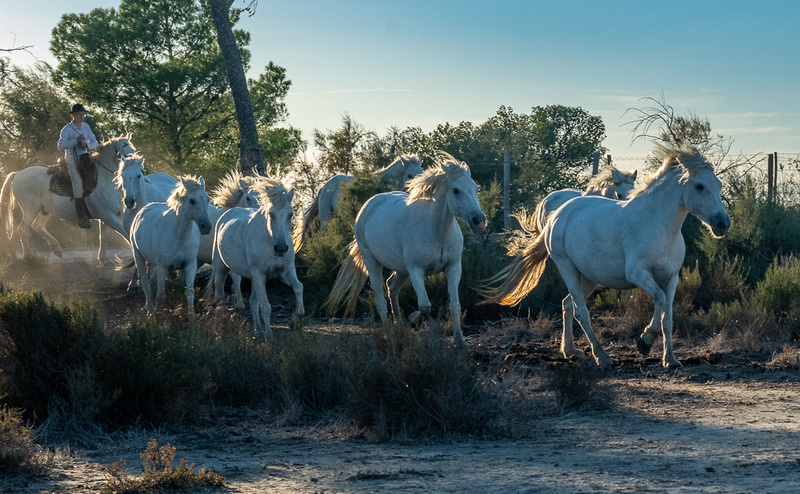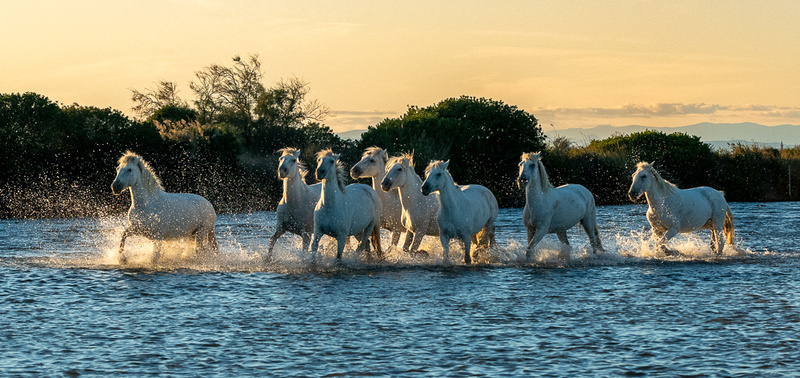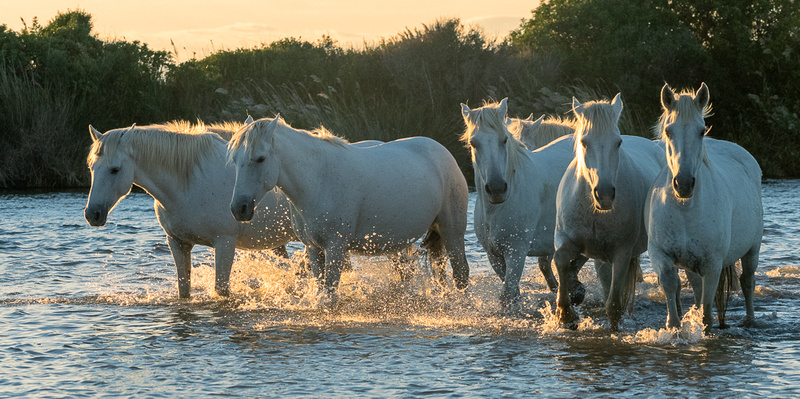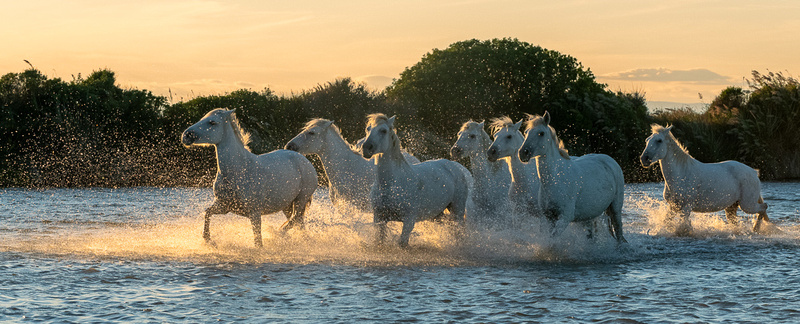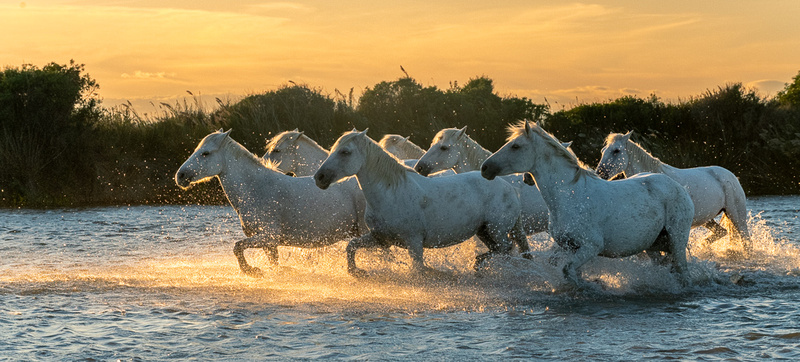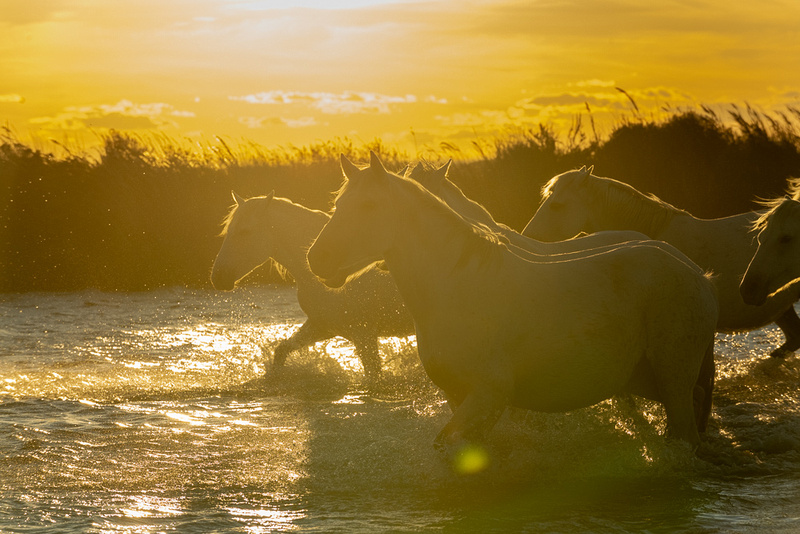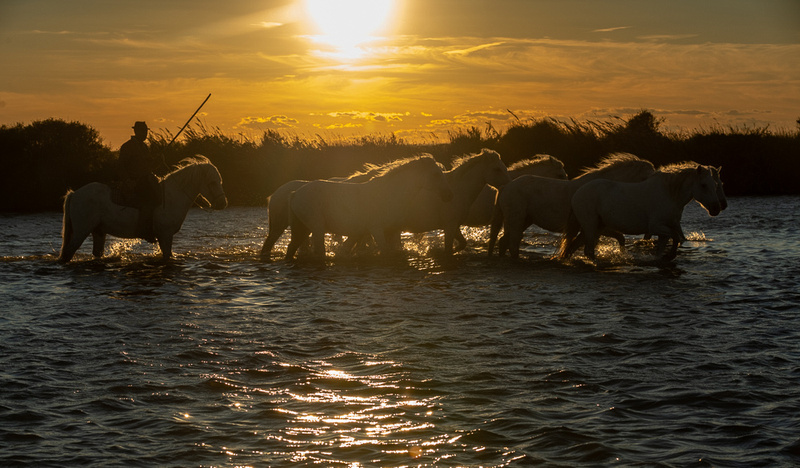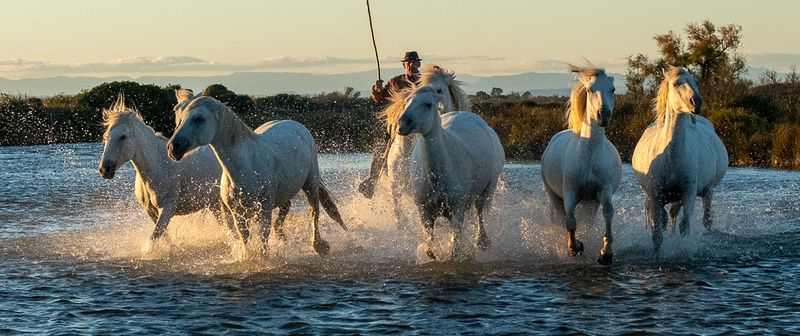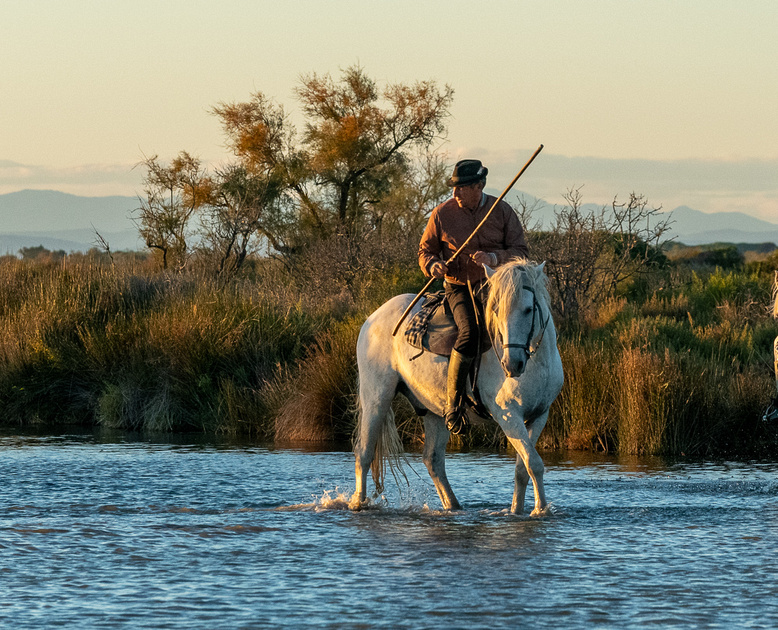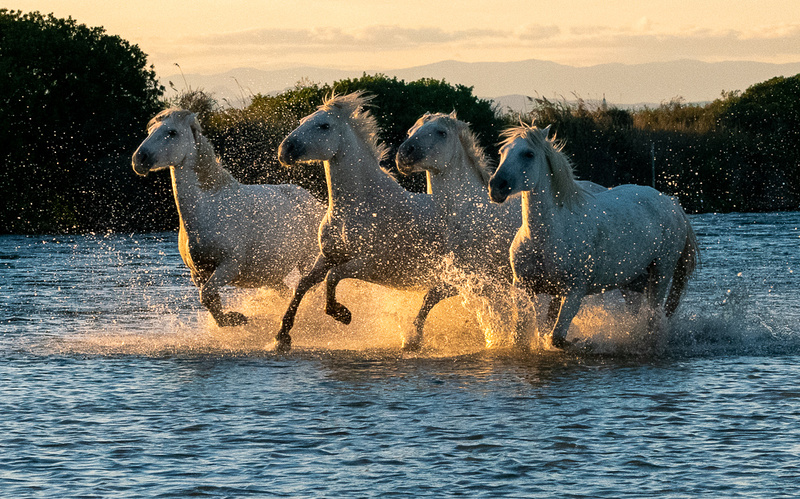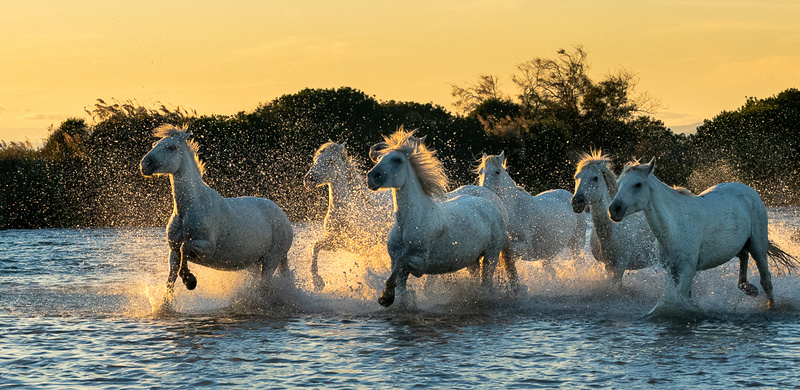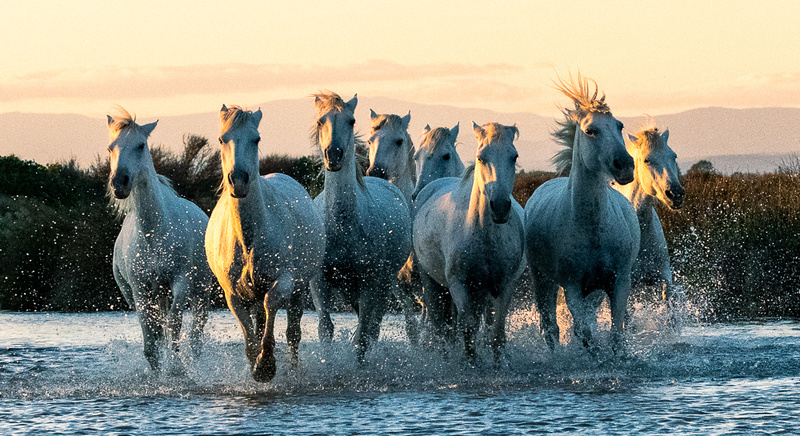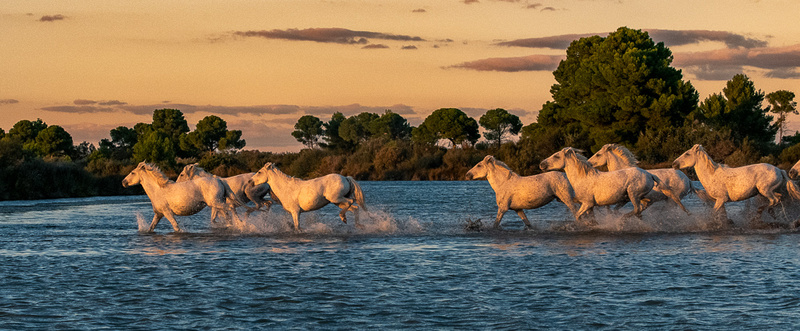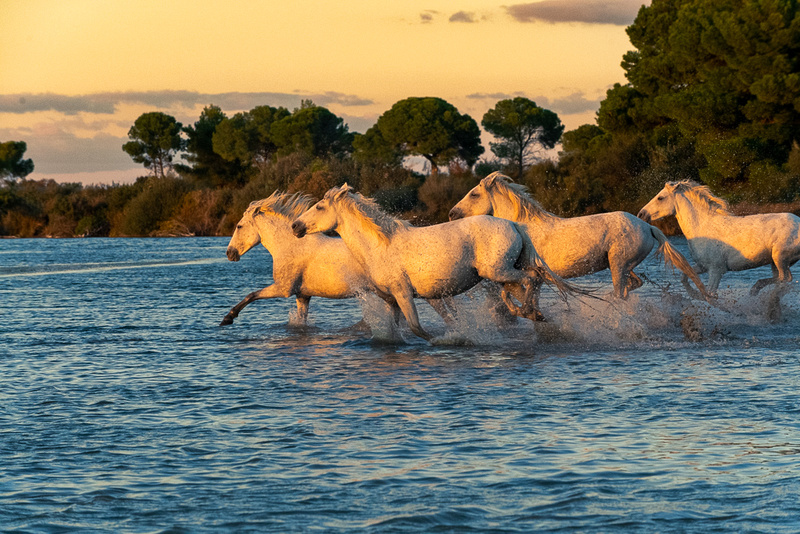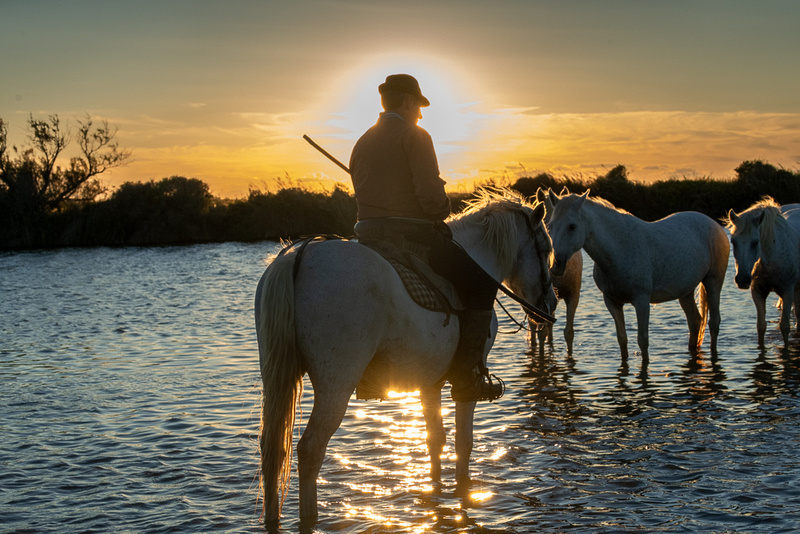Back to the Camargue, AgainFriday October 4th We spent the morning making one more spin through Olargues.
Time now to head back to the Camargue. We would spend the rest of the trip in the medieval walled town of Aigues-Mortes, built by King Louis IX in the 1200's. If you followed the blog last year, this is where we saw the French style bullfighting. It was so much fun we had to come back. This time we allocated three full days for the festival.
We were welcomed by the great rows of sycamores of southern France.
Last year we were caught totally off guard on what we were getting ourselves into with these black bulls and white horses so this time we tried to get up to speed on what was going on. This festival goes on for eleven days and there are events in different parts of town. We will be ready tomorrow morning. Meantime we enjoyed the sunset.
CarcassonneThursday Oct 3rd Our destination this day would be the great walled town of Carcassonne. It has been quite well preserved and is a UNESCO World Heritage site. It too, is on the Canal du Midi. But on the way we wanted to check out a couple of other spots. First was a very cool windmill, which was a purely serendipitous find when JM spotted a sign on the side of the road. The cloudy weather from the previous day was still hanging around.
We got into Carcassonne and were right by the the cathedral so we made a visit. Impressive.
Finally pulled up to the castle. The gentleman below was patiently waiting for a challenger.
We made it back to Olargues just before dark.
BeziersWednesday October 2nd We started our morning looking around Olargue a little more. It was all very quaint and clean but not too dolled up for the tourists. Our hostess was an artist and her gallery was on the first floor of our accommodations.
And we did find a few spots to take a picture.
Guess which profession the signage below is advertising. Answer at the end of the post.
Below is the WWI memorial to the fallen. Every village has one.
Then on to Beziers. This is a small medieval city on the Orb river. The Orb was used for navigation until the 17th century when the Canal du Midi was dug along the route of the river up to Toulouse, where another canal connected to the Atlantic coast. This was a huge shot in the arm to their economy, similar to our digging the Erie Canal, as trade no longer had to go around Spain, which was not always on friendly terms with France.
Did I mention that I like reflections?
Like most cities in France, large and small, they have a beautiful cathedral.
Jeanne Marie enjoyed a serendipitous one hour organ concert while I climbed the steps to the roof. The view from the roof.
Below St. Jeanne d'Arc meets St. Jeanne.
The Canal du Midi runs through Breziers and it is an interesting thing to see.
Answer to the question at the top of the post: The midwife.
Exploring LanguedocMonday Sept 30th After finishing the morning session photographing the horses in the marshes we headed west up the coast. We would return to the Camargue at the end of the week for the bull festival at Aigues-Mortes. For now our first destination was the seaside town of Sete. Our daughter Erin had spent three weeks here as an exchange student and enjoyed it so much she's been after us for years to get there. Three canals converge at the town so it bills itself as the Venice of France. It is certainly charming, and it is certainly easier to get around by boat than by car, but Venice? Ummmm... I'm afraid not. We walked around for a few hours, had a glass of wine beside the canal, and soaked up the atmosphere.
You can see that the overcast sky of the morning had broken up and we would have loved to wait for sunset but our B&B was in a medieval hilltop town, Olargues, and we wanted to get there before dark. This would be a trip back in time. The town, as we see it today, was pretty much built by the end of the 1200s, One could in theory, drive in the town, and we did so to unload the luggage, but it was better to walk, or should I say climb, around the town than try to drive, much less park.
Tuesday October 1st. Olargues would be our base for the rest of the week. We had some villages, some castles, and a couple of larger towns to check out. They were all within an hour or so of home. The sky that day had a high thin overcast all day which softened the light for photography. No harsh shadows. So off we went. First place was the village of Roquebrun.
I guess I can't help myself when I see reflections. Then it was just a short drive over to Minerve, a town built on the edge of a gorge. No reflections here!
This gravel road/river bed actually had a name so Gladys thought it was okay to take us there. It was a little unnerving. But it turned out fine. Besides, it was a rental car. We had a nice lunch of steak frites on top of the cliff.
Back to Olargues for supper.
White Horses in the MarshesMonday Sept 30th Cecille would take us on two more photo sessions, both in the marshes. The first was the morning of Sept 30th, the second was on Friday Oct 4th, but I will report on both now. The weather was completely different for the two sessions which gave us two very different kinds of images. The first session was fully overcast and a little misty, and the light was very flat. Pretty good grist for black and white but I'll keep these in color. We'll do some B&W in the last post for the trip.
The flat skies and calm winds gave us the opportunity to get some get some reflection shots.
But horses running through the marsh is we really wanted.
To finish off the session we tried a little Phancy Photography. Using a relatively slow shutter speed we tracked the rider as he rode across the field of view. This left everything but the horse and rider blurry. Fun.
I've learned from photographing the white horses in Missouri the potential of backlighting. This was a terrific opportunity.
Once more, boys, into the water!
What a day!! |
